https://tinyurl.com/yckdognr
![]()
![No automatic alt text available.]()
![Image result for baudhayana migrations]()
![]()
Battle of interpretation of R̥gveda texts
The battle of ten kings in the world's most ancient text, R̥gveda, is matched by the Battle of R̥gveda texts.
An evidence of the battle of texts is presented in this long note, long because it includes full texts from R̥gveda (with alternative translations) and full texts of the papers of Stuhrmann, Witzel and Talageri.
Witsel leans on Stuhrmann to distort the meanings of texts. Shrikant Talageri points out how the disagreements between Witzel and Stuhrmann are whitewashed by Witzel on the issue of the identification of the guru of Bharata-s. Some scholars see dāśarājñá as a battle between two guru-s: Viśvāmitra and Vasiṣṭha [like the academic wars fought on German indology roots, cf. Vishwa Adluri and Joydeep Bagchi's narration in:The Nay Science: A History of German Indology (2014)] about the meanings and purport of ancient Indian texts.
The battle of texts is about wars involving dāśarājñá, battle of ten kings
R̥gveda documents a battle between the Puru Vedic Aryan kingdoms of the Bharatas, allied with other peoples of the north west India, guided by the royal sage Viśvāmitra, and the Trtsu-Bharata (Puru) king Sudas, who emerges victorious. KF Geldner in his 1951 translation avers that this battle narrative is a historical event. Schmidt has, in 1980, discussed the details of the battle. (Schmidt, H.P. Notes on Rgveda 7.18.5-10. Indica. Organ of the Heras Institute, Bombay. Vol.17, 1980, 41-47.)
Reasons/causes for the dāśarājñá, battle of ten kings
What was the objective of the battle? In my view, the battlefield in the Ravi riverbasin and the key cause for the battle is provided by the metaphor of 'hungry fish' used in RV VII.18.6:
![]()
"Eager for spoil was Turvasa Purodas, fain to win wealth, like fishes urged by hunger.
The Bhrgus and the Druhyus quickly listened: friend rescued friend mid the two distant peoples." (Griffith translation)
Sayana/Wilson translate the r̥ca focussing on Turvaśa's mission to acquire wealth: Turvas'a, who was presiding (at solemn rites), diligent in sacrifice, (went to Suda_sa) for wealth; but like fishes restricted (to the element of water), the Bhrigus and Druhyus quickly assailed them; of these two everywhere going the friend (of Suda_sa, Indra) rescued his friend.
रयि m. or (rarely) f. (fr. √ रा ; the following forms occur in the वेद , रयिस् , °य्/इम् , °यिभिस् , °यीणाम् ; रय्य्/आ,°य्य्/ऐ,°य्य्/आम् ; cf. 2. रै) , property , goods , possessions , treasure , wealth (often personified) RV. AV. VS. Br. S3rS. ChUp.
This comparison of Matsya people with 'hungry fish' means, that there were rivalries among the people about the use of water from the rivers for their livelihoods (hence, the signifier of hungry fish) and about the impediments caused to acquire wealth.
The pun on the word matsya, 'fish' is also a reference to the name of peoples called matsya. Matsya is one of the 16 janapada-s. https://en.wikipedia.org/wiki/Matsya_Kingdom This may explain the reason why the battle was joined by ten kings since a large number of people from the region of North India were concerned about their livelihood, searching for avenues to acquire wealth.
![]()
A succinct narrative is the summary provided in Wikipedia.https://en.wikipedia.org/wiki/Battle_of_the_Ten_Kings
Belligerents involved in dāśarājñá
The Trtsu are the group led by king Sudas. Sudas himself is included in the "ten kings", as the Trtsus are said to be surrounded by ten kings in 7.33.5. But it is not made explicit how this number is supposed to be broken down: if of the peoples mentioned in 7.18, the Turvasas, Yaksuss (pun for Yadu),[4] Matsyas, Bhrgus, Druhyus, Pakthas, Bhalanas, Alinas, Shivas and Visanins are counted, the full number is reached, leaving the Anavas (7.18.14), the Ajas and Sigrus (7.18.19) and the "21 men of both Vaikarna tribes" (7.18.11) without a king, and implying that Bheda (7.18.19, also mentioned 7.33.3 and 7.83.4, the main leader slain by Sudas), Shimyu (7.18.5), and Kavasa (7.18.12) are the names of individual kings. The Bharatas are named among the enemies in 7.33 but not in 7.18.
- Alinas: One of the tribes defeated by Sudas at the Dasarajna, and it was suggested that they lived to the north-east of Nuristan, because the land was mentioned by the Chinese pilgrim Xuanzang.
- Anu: Some place them in the Paruṣṇī (Ravi) area.
- Bhrigus: Probably the priestly family descended from the ancient Kavi Bhrigu. Later, they are related to the composition of parts of the Atharva Veda (Bhṛgv-Āṅgirasa) .
- Bhalanas: Fought against Sudas in the Dasarajna battle. Some scholars have argued that the Bhalanas lived in the Bolan Pass area.
- Druhyus: Some align them with the Gandhari (RV I 1.126.7).
- Matsya are only mentioned in the RV (7.18.6), but later in connection with the Śālva.
- Parsu: The Parśu have been connected by some with the ancient Persians.
- Purus: One of the major tribal confederations in the Rigveda.
- Panis: Also the name of a class of demons; later associated with the Scythians.
A monograph in German by Rainer Stuhrmann was published in 2016 with a summary English translation by Michael Witzel.
http://crossasia-journals.ub.uni-heidelberg.de/index.php/ejvs/article/view/933
https://bharatiya-prakrtisanskrtibhakti.blogspot.in/p/bharatavarsha-ancient-kingdoms-peoples.html Bharatavarsha - Ancient Kingdoms and Peoples
Dasarajna Yuddha and Mahabharata
Erdosy also sees the dāśarājñá as a prototype of Mahābhārata war of later periods. (Erdosy, George (1995), The Indo-Aryans of Ancient South Asia: Language, Material Culture and Ethnicity, Walter de Gruyter).
The two blogposts expoud a hypothesis that the Mahābhārata war narratives are recollections/re-statement of theThe Battle of Ten Kings (dāśarājñá) in R̥gveda.
References to the Battle of Ten Kings occur in the following texts: RV VII, hymns 18, 33 and 83.4-8). The full texts of RV VII.18, 33 and 83 are presented below.
Translation (Sayana/Wilson):
7.018.01 Our forefathers, Indra, glorifying you, have obtained all desirable (riches); in your gift are cows easy to be milked, and horses, and you are the liberal donor of wealth to the devout. [tve = tvayi, in you].
7.018.02 You dwell with your glories like a ra_ja_ with his wives; Maghavan, who are wise and experienced, (reward our) praises with the precious metals, with cows, with horses; conduct us who are dependent on your riches. [With the precious metals: pis'a_, silver or gold, and the like; ru_pen.a hiran.ya_dina_ va_; ru_pa may also mean beauty].
7.018.03 These gratifying and pious hymns, emulous (in earnestness), are addressed on this occasion to you, may the path of your riches lead downwards; may we, Indra, (diligent) in your praise, enjoy felicity.
7.018.04 Desirous of milking you like a milch cow at pasture, Vasis.t.ha has let loose his prayers to you; every one of my people proclaims you the lord of cattle; may Indra be present at our praises.
7.018.05 The adorable Indra made the well-known deep waters (of the Parus.n.i) fordable for Suda_sa, and converted the vehement awakening imprecation of the sacrificer into the calumnation of the rivers. [Converted the vehement: sardhantam s'imyum uchahasya s'a_pam sindhu_na_m akr.n.od as'asti_h = utsahma_na_m bodhma_na_m stotuh s'a_pam abhis'asti_h sindhu_na_m akarot, he made the exerting awakening curse of the praiser the imprecations of the rivers; vis'varu_podbhavam a_tmano abhis'a_pam, the imprecation on his (Indra) has its birth in vis'varu_pa].
7.018.06 Turvas'a, who was presiding (at solemn rites), diligent in sacrifice, (went to Suda_sa) for wealth; but like fishes restricted (to the element of water), the Bhrigus and Druhyus quickly assailed them; of these two everywhere going the friend (of Suda_sa, Indra) rescued his friend. [The legend: Indra saves one of the two, Suda_sa (and perhaps slays the other), turvas'am avadhi_t; matsyaso nis'itah, fishes limited to water; the people of the country Matsya were attacked by Turvas'a, tena matsyajanapada ba_dhitah; s'rus.t.im cakruh (applied to the Bhrigus) = as'upra_ptim cakruh; sukham turvas'asys cakruh-- making the Bhrigus and Druhyus the allies of Turvas'a].
7.018.07 Those who dress the oblation, those who pronounce auspicious words, those who abstain from penance, those who bear horns (in their hands), those who bestow happiness (on the world by sacrifice), glorify that Indra, who recovered the cattle of the Arya from the plunderers, who slew the enemies in battle. [Those who dress: Denominations of the persons assisting at religious rites are: 1. paktha_sah, havis.am pa_cakah, cooks of the butter offered in oblation; 2. bhala_nasah, bhadra va_cinah, speakers of that which is lucky; 3. alina_sah, tapobhir apravr.ddhah, not eminent by austerities; 4. vis.a_n.inah, having black horns in their hands for the purpose of scratching kan.d.uyana_rtham, the same as di_ks.itah, having undergone the preliminary purification called di_ks.a; 5. s'iva_sah, ya_ga_dina_ sarvasya lokasya s'ivakarah, the makers happy of all people by sacrifice and the like].
7.018.08 The evil-disposed and stupid (enemies of Suda_sa), crossing the humble Parus.n.i river, have broken down its banks; but he by his greatness pervades the earth, and Kavi, the son of Ca_yamana, like a falling victim, sleeps (in death). [Sleeps in death: killed Suda_sa].
7.018.09 The waters followed their regular course to the Parus.n.i, nor (wandered) beyond it; the quick courser (of the king) came to the accessible places, and Indra made the idly-talking enemies, with their numerous progeny, subject among men (to Suda_sa). [Indra is said to have repaired the banks of the river so that the waters -- iyur artham na nyartham-- went to their object, that is, their former bed, not below or beyond it; the enemies Amitra_n are called vadhriva_cah or jalpaka_n].
7.018.10 They who ride on particoloured cattle, (the Maruts), despatched by Pr.s.n.i and recalling the engagement made by them with their friend (Indra), came like cattle from the pasturage, when left without a herdsman; the exulting Niyut steeds brought them quickly (against the foe).
7.018.11 The hero Indra created the Maruts (for the assistance of the ra_ja_), who, ambitious of fame, slew one-and-twenty of the men on the two banks (of the Parus.n.i), as a well-looking priest lops the sacred grass in the chamber of sacrifice.
7.018.12 You, the bearer of the thunderbolt, did drown S'ruta, Kavas.a, Vr.ddha and afterwards Druhyu, in the waters; for they, Indra, who are devoted to you, and glorify you, preferring your friendship, enjoy it.
7.018.13 Indra, in his might, quickly demolished all their strongholds, and their seven (kinds of) cities; he has given the dwelling of the son of Anu to Tr.tsu; may we, (by propitiating Indra), conquer in battle the ill-speaking man. [Seven kinds of cities: purah sapta, seven cities; nagai_h sapta praka_rah or pra_ka_ra_h, seven-walled; conquer in battle: jes.ma pu_rum manus.yam mr.dhrava_cam, speaking imperfectly or barbarously; or baddhava_cam, whose speech is threatening, obstructing or adverse].
7.018.14 The warriors of the Anus and Druhyus, intending (to carry off the) cattle, (hostile) to the pious (Suda_sa) perished to the number of sixty-six thousand six hundred and sixty; such are all the glorious acts of Indra. [Sixty-thousand: s.as.t.ih s'ata s'at. sahasra s.as.t.ir adhi s'at. = sixty hundreds, six thousands, sixty, with six more; s'ata_ni = thousands, sahasra_ni_tyartham].
7.018.15 These hostile, Tr.tsus, ignorantly contending with Indra, fled routed as rapidly as rivers on a downward course, and being discomfited, abandoned all their possessions to Suda_sa.
7.018.16 Indra has scattered over the earth the hostile rival of the hero (Suda_sa), the senior of Indra, the appropriator of the oblation; Indra has baffled the wrath of the wratfhful enemy, and the (foe) advancing on the way (against Suda_sa) has taken the path of flight.
7.018.17 Indra, has effected a valuable (donation) by a pauper; he has slain an old lion by a goat; he has cut the angles of the sacrificial post with a needle; he has given all the spoils (of the enemy) to Suda_sa. [Indra has effected: the three impossible acts are illustrative of the wonderful power of Indra].
7.018.18 Your numerous enemies, Indra, have been reduced to subjection, effect at some time or other the subjugation of the turbulent Bheda, who holds men praising you as guilty of wickedness; hurl, Indra, your sharp thuderbolt against him. [Bheda: one who breaks or separates; may mean an unbeliever, a na_stika; or, the name of the enemy of Suda_sa].
7.018.19 The dwellers on the Yamuna and the Tr.tsus glorified Indra when he killed Bheda in battle; the Ajas, the S'igrus, the Yaks.as, offered him as a sacrifice the heads of the horses (killed in the combat). [Offered to him: balim s'i_rs.a_n.i jabhrur as'vya_ni : they represented the best horses, taken; bali may also have the import of a sacrifice].
7.018.20 Your favours, Indra, and your bounties, whether old or new, cannot be counted like the (recurring) dawn; you have slain Devaka, the son of Ma_nyama_na, and of thine own will, has cast down S'ambara from the vast (mountain).
7.018.21 Para_s'ara, the destroyer of hundreds (of ra_ks.asas), and Vasis.t.ha they who, devoted to you, have glorified you in every dwelling, neglect not the friendship of you (their) benefactor; therefore prosperous days dawn upon the pious. [The destroyer: s'ataya_tu, that is, s'akti, the son of Vasis.t.ha, the father of Para_s'ara (Vis.n.u Pura_n.a 8.4)].
7.018.22 Praising the liberality of Suda_sa, the grandson of Devavat, the son of Paijavana, the donor of two hundred cows, and of two chariots with two wives, I, worthy (of the gift), circumambulate you, Agni, like the ministrant priest in the chamber (of sacrifice).
7.018.23 Four (horses), having golden trappings, going steadily on a difficult road, celebrated on the earth, the excellent and acceptable gifts (made) to me by Suda_sa, the son of Paijavana, bear me as a son (to obtain) food and progeny. [The excellent: smaddis.t.ayah, an epithet of as'vah: prasa'sta_tisarjana_ s'raddha_dida_na_n:gayukta_, being or having part of a donation made in the belief of presenting what is excellent].
7.018.24 The seven worlds praise (Suda_sa) as if he were Indra; him whose fame (spreads) through the spacious heaven and earth; who, munificent, has distributed (wealth) on every eminent person, and (for him) the flowing (rivers) have destroyed Yudhyamadhi in war.
7.018.25 Maruts, leaders (of rites), attend upon this (prince) as you did upon Divoda_sa, the father of Suda_sa; favour the prayers of the devout son of Pijavana, and may his strength be unimpaired, undecaying].
Alternative translation (Grifffith): HYMN XVIII. Indra. 18 1. ALL is with thee, O Indra, all the treasures which erst our fathers won who sang thy praises.
With thee are milchkine- good to milk, and horses: best winner thou of riches for the pious.
2 For like a King among his wives thou dwellest: with glories, as a Sage, surround and help us.
Make us, thy servants, strong for wealth, and honour our songs wirth kine and steeds and
decoration.
3 Here these our holy hymns with joy and gladness in pious emulation have approached thee.
Hitherward come thy path that leads to riches: may we find shelter in thy favour, Indra.
4 Vasistha hath poured forth his prayers, desiring to milk thee like a cow in goodly pasture.
All these my people call thee Lord of cattle: may Indra. come unto the prayer we offer.
5 What though the floods spread widely, Indra made them shallow and easy for Sudas to traverse.
He, worthy of our praises, caused the Simyu, foe of our hymn, to curse the rivers' fury.
6 Eager for spoil was Turvasa Purodas, fain to win wealth, like fishes urged by hunger.
The Bhrgus and the Druhyus quickly listened: friend rescued friend mid the two distant peoples.
7 Together came the Pakthas, the Bhalanas, the Alinas, the Sivas, the Visanins.
Yet to the Trtsus came the Aryas' Comrade, through love of spoil and heroes' war, to lead them.
8 Fools, in their folly fain to waste her waters, they parted inexhaustible Parusni.
Lord of the Earth, he with his might repressed them: still lay the herd and the affrighted
herdsman.
9 As to their goal they sped to their destruetion: they sought Parusni; even the swift returned
not.
Indra abandoned, to Sudas the manly, the swiftly flying foes, unmanly babblers.
10 They went like kine unherded from the pasture, each clinging to a friend as chance directed.
They who drive spotted steeds, sent down by Prsni, gave ear, the Warriors and the harnessed horses.
11 The King who scattered oneandtwenty— people of both Vaikarna tribes through lust of glory-
As the skilled priest clips grass within the chamber, so hath the Hero Indra, wrought their
downfall.
12 Thou, thunderarmed-, overwhelmedst in the waters famed ancient Kavasa and then the Druhyu.
Others here claiming friendship to their friendship, devoted unto thee, in thee were joyful.
13 Indra at once with conquering might demolished all their strong places and their seven castles.
The goods of Anus' son he gave to Trtsu. May we in sacrifice conquer scorned Puru.
14 The Anavas and Druhyus, seeking booty, have slept, the sixty hundred, yea, six thousand,
And sixandsixty— heroes. For the pious were all these mighty exploits done by Indra.
15 These Trtsus under Indras' careful guidance came speeding like loosed waters rushing downward.
The foemen, measuring exceeding closely, abandoned to Sudas all their provisions.
16 The heros' side who drank the dressed oblation, Indras' denier, far over earth he scattered.
Indra brought down the fierce destroyers' fury. He gave them various roads, the paths' Controller.
17 even with the weak he wrought this matchless exploit: even with a goat he did to death a lion.
He pared the pillars' angles with a needle. Thus to Sudas Indra gave all provisions.
18 To thee have all thine enemies submitted: even the fierce Bheda hast thou made thy subject.
Cast down thy sharpened thunderbolt, O Indra, on him who harms the men who sing thy praises.
19 Yamuna and the Trtsus aided Indra. There he stripped Bheda bare of all his treasures.
The Ajas and the Sigrus and the Yaksus brought in to him as tribute heads of horses.
20 Not to be scorned, but like Dawns past and recent, O Indra, are thy favours and thy riches.
Devaka, Manyamanas' son, thou slewest, and smotest Sambara from the lofty mountain.
21 They who, from home, have gladdened thee, thy servants Parasara, Vasistha, Satayatu,
Will not forget thy friendship, liberal Giver. So shall the days dawn prosperous for the princes.
22 Priestlike-, with praise, I move around the altar, earning Paijavanas' reward, O Agni,
Two hundred cows from Devavans' descendant, two chariots from Sudas with mares to draw them.
23 Gift of Paijavana, four horses bear me in foremost place, trained steeds with pearl to deck
them.
Sudass' brown steeds, firmlystepping-, carry me and my son for progeny and glory.
24 Him whose fame spreads between wide earth and heaven, who, as dispenser, gives each chief his
portion,
Seven flowing Rivers glorify like Indra. He slew Yudhyamadhi in close encounter.
25 Attend on him O ye heroic Maruts as on Sudass' father Divodasa.
Further Paijavanas' desire with favour. Guard faithfully his lasting firm dominion.
7.033.01 The white-complexioned accomplishers of holy ceremonies, wearing the lock of hair on the right side, have afforded me delight, when, rising up I call the leaders (of rites) to the sacred grass; the Vasis.t.has, (my sons) should never be far from me. [White-complexioned: s'vity an~cah = s'vetavarn.ah, white-coloured (applied to the vasis.t.has); wearing the lock of hair on the right side: daks.in.atas kaparda_h: kaparda = cu_d.a or single lock of hair left on the top of the head at tonsure; Vasis.t.has wear it on the right of the crown of the head, daks.in.e s'iraso bha_ge].
7.033.02 Disgracing (Pa_s'adyumna), they brought from afar the fierce Indra, when drinking the ladle of Soma at his sacrifice, to (receive) the libation (of Suda_sa); Indra hastened from the effused Soma of Pa_s'adumna, the son of Va_yata, to the Vasis.t.has. [They brought: A legend is related. The sons of Vasis.t.ha had undertaken a soma sacrifice to Indra on behalf of Suda_sa. They found that he was present at a similar solemnity instituted by the ra_ja_ Pa_s'adyumna, the son of Va_yata, on which they abused the ra_ja_, broke off his sacrifice, and by their mantras, compelled Indra to come to that of their patrons].
7.033.03 In the same manner was he, (Suda_sa) enabled by them easily to cross the Sindhu river; in the same manner, through them he easily slew his foe; so in like manner, Vasis.t.has, through your prayers, did Indra defend Suda_sa in the war with the ten kings. [He easily sle his foe: bhedam jagha_na: bheda may also be a proper name; in the war with ten kings: da_s'ara_jn~e = das'abhi_ ra_ja_bhih saha yuddhe].
7.033.04 By your prayers, leaders (of rites), is effected the gratificcation of your progenitors; I have set in motion the axle (of the chariot); be no you intert, for by your sacred metres, Vasis.t.has, (chanted) with a loud voice, you sustain vigour in Inda. [Of your rogenitors: pitr.n.a_m, in the gen., pl. used honorifically, implying father, i.e. Vasis.t.ha; I have set in motion: aks.am avyayam = rathasya aks.am avyaya_mi, ca_laya_mi, I cause to move the axle of the car, ascribing the words to Vasis.t.ha, as announcing his intention to return to his hermitage].
7.033.05 Suffering from thirst, soliciting (rain), supported (by the Tr.tsus) in the war with the ten ra_ja_s, (the Vasis.t.has) made Indra radiant as the sun; Indra heard (the praises) of Vasis.t.ha glorifying him, and bestowed a spacious region on the Tr.tsus.
7.033.06 The Bharatas, inferior (to their foes), were shorn (of their possessions), like he staves for driving cattle, (stripped of their leaves and branches); but Vasis.t.ha became their family priest, and the people of the Tr.tsus prospered. [People of the Tr.tsus: Tr.tsus are the same as the Bharatas. Sam.varan.a, the son of R.ks.a, the fourth in descent from Bharata, the son of Dus.yanta, was driven from his kingdom by the Pa_n~ca_las, and obliged to take refuge with his tribe among the thickets on the Sindhu until Vasis.t.ha came to them and consented to be the ra_ja_'s purohit, when they recovered their territory].
7.033.07 Three shed moisture upon the regions, three are their glorious progeny, of which the chief is night; three communicators of warmth accompany the dawn; verily the Vasis.t.has understand all these. [Three shed moisture: S'a_tya_ana is cited: the three who send rain on the three regions of earth, mid-air, and heaven, are Agni, Va_yu and A_ditya; they also diffuse warmth; thei offspring are the Vasus, the Rudras, the A_dityas, the latter of whom are the same as Jyotis., light].
7.033.08 The glory of these Vasi.s.t.has is like the splendour of the sun; their greatness as profound as (the depth of) the ocean; your praise, Vasis.t.has, has the velocity of the wind; by no other can it be surpassed.
7.033.09 By the wisdom seated in the heart the Vasis.t.has traverse the hidden thousand branched world, and the Apsarasas sit down wearing the vesture spread out by Yama. [The hidden thousand-branched world: nin.yam sahasravals'am abhisan~caranti, they completely go over the hidden, tirohitam, or durjn~a_nam, ignorant, sahasra vals'am, thousand-branched, that is, sam.sa_ram, the revolving world of various living beings, or the succession of many births; the allusion is to the repeated births of Vasis.t.ha, who is the first of the Praja_patis, or mind-born sons of Brahma_, who is the son of Urvas'i_; hr.dayasya praketaih prajn~a_naih, internal convictions or knowledge; this may imply the detachment of Vasis.t.ha or his sons from the world. The apsaras sit down: yamena tatam paridhim vayanto apsarasa upasedur vasis.t.ha_h: te vasis.tha_h, those vasis.t.has or that vasis.t.ha; yamena = sarvaniyantra_, by the restrainer or regulator of all; ka_ran.a_tmana_, identical with cause, that is, by acts, as the causes of vital condition; the garb paridhim, vastram, spread, tatam, by him, is he revolution of life and death; janma_diprava_ha_h, weavin, vayantah; connecting this with apsarasah, the myphs, or, the nymph Urvas'i_, who sat down or approached in the capacity of a mother, jananitvena, wearing that vesture which he was destined by former nets to wear].
7.033.10 When Mitra and Varun.a beheld you, Vasis.t.ha, quitting the lustre of the lightning (for a different form), then one of your births (took place), inasmuch as Agastya bore you from your (former) abode. [Agasya bore you: agastyo yat tva_ vis'a_ a_jabha_ra = yada_ purvavastha_na_t tva_m a_jaha_ra, when Agastya took you from the former condition; mitra_varun.au a_va_m janayisya_va, we two Mitra and Varun.a, will beget; or, a_va_bhya_m ayam ja_yeta iti samakalpata_m, the two divinities determined this Vasis.t.ha shall be begotten by us].
7.033.11 Verily, Vasis.t.ha you are the son of Mitra and Varun.a, born, Brahma_, of the will of Urvas'i_, after the seminal effusion; all the gods have sustained you, (endowed) with celestial and Vedic vigour in the lake. [Born of the will of Urvas'i_: Urvas'i_, on seeing the birth of the R.s.i, said to herself, let this be my son; Endowed with celestial and vedic vigour: brahman.a_ daivyena; adding an epithet: yuktam, joined with; devasambandhina vedara_s'ina_hambhuva yuktam; pus.kara = kumbha, pitcher used at sacrifice, or the vasati_vara, the pool of water prepared for the same. Vasis.t.ha was born when the vessel, pus.kara, was over-filled and some contents fell upon the earth. Agastya was born of the contents in the vessel; the overflowing fluid being collected together, Vasis.t.ha remained in the lake, tato apsu gr.hyama_n.a_su vasis.t.ha_h pus.kare sthitah; Pus.kara is also the name of a lake in Ajmer; Padma Pura_n.a cites it as the hermitage of Agastya (Sr.s.t.i khan.d.a)].
7.033.12 He, the sage, cognizant of both worlds, was the donor of thousands; he was verily donation; wearing the vesture spread spread by Yama, Vasis.t.ha was born of the Apsaras.
7.033.13 Consecrated for the sacrifice, propitiated by praises, they, Mitra and Varun.a, poured a common effusion into the water-jar, from the midst of which Ma_na arose, and from which also, they say, Vasis.t.ha was born. [Consecrated: satre ja_tau = ya_ge di_ks.itau, prepared by preliminary purifications for the ceremony; Ma_na: a name of Agastya with reference to his being of the measure of a span at his birth; udiya_ya tato agastyah s'amyama_tro mahitapah ma_nena sammito yasma_d ma_nya ihocyate, thence arose the great asceic Agastya of the measure of a span, as measured by a measure (ma_na); he is therefore, caled upon earth Ma_nya. Another legend: Agastya was, in a preceding birth, the son of Pulastya].
7.033.14 Pratr.ts, Agastya comes to you; welcome him with devoted minds, and he in the foremost station directs the reciter of the prayer, the chanter of the hymn, the grinder of the stone, and repeats (what is to be repeated). [Pratr.ts = Tr.tsus; in the foremost station: agre, in front, that is, as their Purohita].
Alternative translation (Griffith): HYMN XXXIII Vasistha. 33 1. THESE who wear hairknots- on the right, the movers of holy thought, whiterobed-, have won me
over.
I warned the men, when from the grass I raised me, Not from afar can my Vasisthas help you.
2 With Soma they brought Indra from a distance, Over Vaisanta, from the strong libation.
Indra preferred Vasisthas to the Soma pressed by the son of Vayata, Pasadyumna.
3 So, verily, with these he crossed the river, in company with these he slaughtered Bheda.
So in the fight with the Ten Kings, Vasisthas! did Indra help Sudas through your devotions.
4 I gladly, men I with prayer prayed by our fathers have fixed your axle: ye shall not be injured:
Since, when ye sang aloud the Sakvari verses, Vasisthas! ye invigorated Indra.
5 Like thirsty men they looked to heaven, in battle with the Ten Kings, surrounded and imploring.
Then Indra heard Vasistha as he praised him, and gave the Trtsus ample room and freedom.
6 Like sticks and staves wherewith they drive the cattle, Stripped bare, the Bharatas were found
defenceless:
Vasistha then became their chief and leader: then widely. were the Trtsus' clans extended.
7 Three fertilize the worlds with genial moisture: three noble Creatures cast a light before them.
Three that give warmth to all attend the morning. All these have they discovered, these Vasisthas.
8 Like the Suns' growing glory is their splendour, and like the seas' is their unflathomed
greatness.
Their course is like the winds'. Your laud, Vasisthas, can never be attained by any other.
9 They with perceptions of the heart in secret resort to that which spreads a thousand branches.
The Apsaras brought hither the Vasisthas wearing the vesture spun for them by Yama.
10 A form of lustre springing from the lightning wast thou, when Varuna and Mitra saw thee.
Thy one and only birth was then, Vasistha, when from thy stock Agastya brought thee hither.
11 Born of their love for Urvasi, Vasistha thou, priest, art son of Varuna and Mitra;
And as a fallen drop, in heavenly fervour, all the Gods laid thee on a lotusblossorn-.
12 He thinker, knower both of earth and heaven, endowed with many a gift, bestowing thousands,
Destined to wear the vesture spun by Yama, sprang from the Apsaras to life, Vasistha.
13 Born at the sacrifice, urged by adorations, both with a common flow bedewed the pitcher.
Then from the midst thereof there rose up Mana, and thence they say was born the sage Vasistha.
14 He brings the bearer of the laud and Saman: first shall he speak bringing the stone for
pressing.
With grateful hearts in reverence approach him: to you, O Pratrdas, Vasistha cometh.
7.083.01 Indra and Varun.a, leaders (of rites), contemplating your affinity, and desirous of cattle, the worshippers, armed with large sickles, have proceeded to the east (to cut the sacred grass); destroy, Indra and Varun.a, your enemies, whether Da_sa_s or A_rya_s and defend Suda_sa with yor protection. [Sickles: pr.thupars'avah = visti_rn.a s'vapars'u hasta, holding large rib-bones of horses; as'vapars'u = an implement for cutting the kus'a grass (as'vapars'va_ barhiracchaiti: Taittiri_ya Bra_hman.a 3.2.2.1), either the rib of a horse, or an instrument like it; it is frequently alluded to in the Bra_hman.as and Su_tras; Taittiri_ya Sam.hita_ 1.1.2: ghos.ad asi: Baudha_yana says that this is addressed to the As'vapars'u; you are the implement, the priest having taken it in his hand; as'vapars'u as'vapars'vasthi, the rib-bone of a horse, the edge of which is as sharp as a sword, and fit for cutting; tac ca khad.gavat ti_ks.n.adbaratvat lavane samarthah].
7.083.02 Where men assemble with uplifted banners, in whatever conflict, there is something unfavourable; where living beings, looking to heaven, are in fear, there, Indra and Varun.a, speak tous (encouragement). [There is something unfavourable: 'everything is evil'; yatra ca yuddhe bhuvana_, bhuvana_ni, bhu_taja_ta_ni svardr.s'ah, s'ari_rapatad u_rdhvam svargasya dras.t.a_ro vitas' ca bhayante, bibhyati, tatra, tadris'e san:gra_me he indra_varun.au no'sman adhivocatam, asmatpaks.apa_tavacanau bhavata_m = in whatever (battle) living beings and those seeing heaven (i.e. gone to heaven, departed) are in fear, there, Indra and Varun.a, plead our cause].
7.083.03 The ends of the earth are beheld laid waste; the clamour has ascended, Indra and Varun.a, to heaven; the adversaries of my people approach me; having heard my invocation, come for my defence.
7.083.04 Indra and Varun.a, you protected Suda_sa, overwhelming the yet unassailed Bheda with your fatal weapons; here the prayers of threse Tr.tsus in time of battle, so that my ministration may have borne them fruit.
7.083.05 Indra and Varun.a, the murderous (weapons) of my enemy distressme; foes among the malignant (assail me); you two are sovereigns over both (celestial and terrestrial) wealth; protect us therefore, onthe day of battle.
7.083.06 Both (Suda_sa and the Tr.tsus) call upon you two (Indra and Varun.a), in combats for the acquisition of wealth, when you defend Suda_sa, together with Tr.tsus, when attacked bythe ten ra_ja_s.
7.083.07 The ten confederated irreligious ra_ja_s did not prevail, Indra and Varun.a, against Suda_sa; the praise of the leaders (of rites), the offerers of sacrificial food, was fruitful; the gods were present at their sacrifices.
7.083.08 You gave vigour, Indra and Varun.a, to Suda_sa when surrounded on all sides by the ten ra_ja_s (in the country) where the pious Tr.tsus, walking in whiteness, and wearing braided hair, worshipped with oblations and praise. [Walking in whiteness: s'vit yan~cah kapardinas tr.tsavah: the epithes are explained: svaityam nairma_lyam gacchantah, going in, or to, whiteness, or freedom from soil; and jat.ilah, having braided hair. The Tr.tsus are the pupils of Vasis.t.ha, Vasis.t.has'is.ya_h etasanjn~a_h r.tvija_h].
7.083.09 One of you destroys enemies inbattle, the other ever protects religious observances; we invoke you, showerers (of benefits), with praises; bestow upon us, Indra and Varun.a, felicity.
7.083.10 May Indra, Varun.a, Mitra, Aryaman grant us wealth and a large and spacious mansion; may the lustre of Aditi, the augmentress (of sacrifice), be innoxious to us; we recite the praise of the divine Savita_.
Alternative translation (Griffith): HYMN LXXXIII. IndraVaruna-. 83 1. LOOKING to you and your alliance, O ye Men, armed with broad axes they went forward, fain for
spoil.
Ye smote and slew his Dasa and his Aryan enemies, and helped Sudas with favour, IndraVaruna-.
2 Where heroes come together with their banners raised, in the encounter where is naught for us to
love,
Where all things that behold the light are terrified, there did ye comfort us, O IndraVaruna-.
3 The boundaries of earth were seen all dark with dust: O IndraVaruna-, the shout went up to
heaven.
The enmities of the people compassed me about. Ye heard my calling and ye came to me with help.
4 With your resistless weapons, IndraVaruna-, ye conquered Bheda and ye gave Sudas your aid.
Ye heard the prayers of these amid the cries of war: effectual was the service of the Trtsus'
priest.
5 O IndraVaruna-, the wickedness of foes and mine assailants' hatred sorely trouble me.
Ye Twain are Lords of riches both of earth and heaven: so grant to us your aid on the decisive day.
6 The men of both the hosts invoked you in the fight, Indra and Varuna, that they might win the
wealth,
What time ye helped Sudas, with all the Trtsu folk, when the Ten Kings had pressed him down in
their attack.
7 Ten Kings who worshipped not, O IndraVaruna-, confederate, in war prevailed not over Sudas.
True was the boast of heroes sitting at the feast: so at their invocations Gods were on their side.
8 O IndraVaruna-, ye gave Sudas your aid when the Ten Kings in battle compassed him about,
There where the whiterobed- Trtsus with their braided hair, skilled in song worshipped you with
homage and with hymn.
9 One of you Twain destroys the Vrtras in the fight, the Other evermore maintains his holy Laws.
We call on you, ye Mighty, with our hymns of praise. Vouchsafe us your protection, IndraVaruna-.
10 May Indra, Varuna, Mitra, and Aryaman vouchsafe us glory and great shelter spreading far.
We think of the beneficent light of Aditi, and Savitars' song of praise, the God who strengthens
Law.
For a translation of RV VIII.18 by Kant Singh see:
"Sudas’ battle with the ten tribes Hymn 7.18 Translated by Kant SinghThe hymn is famous as an account of the famous dasrajanya battle (the battle of ten kings). As my translation shows below, this is a misunderstanding. Sudas’ war was with 21 kings. It may be that they belonged to ten tribes in all (and these ten tribes are named in the hymn). A number of their misunderstandings based on previous faulty translations are also cleared in the below work. For example,it’s clear that there was no matsya tribe involved in this battle; Sudas was himself a Bharata; Aja, Sigru and Yakshu were not his enemies; (The war is over. A celebration has been organized to felicitate Indra and Sudas. People have come from far, to pay tribute.)"
Sudas’ battle with
the ten tribes
Hymn 7.18
Translated by Kant Singh
ar, to pay tribute.)
Die Zehnkönigsschlacht am Ravifluß
Rainer Stuhrmann
Abstract
The present study investigates the question whether and how far the “Ten Kings’ Battle” of RV 7.18 can be understood as an historical occurrence; further, how one has to evaluate the mutual relationship of the tribes and kings involved, as well as the cause, the actual process and the political outcome of the battle. Even though the battle was “the main political occurrence of the Rig-Veda “(Witzel 2007: 435), and thus has been treated frequently, Jamison and Brereton regard the actual events as “anything but clear” (2014, vol. II, p. 903) and even doubt the actual historical value of this hymn.
However, just like the Rig-Veda can indeed be used as an historical source, as indicated by the work of Michael Witzel (1995a, b), in this case too, historical events can be detected in the poetry of the mighty wordsmith Vasiṣṭha.
In favor of an actual battle speak the following arguments: Vasiṣṭha portraits himself as an eye-witness, he describes the progress of the battle with evocative details – quite contrary to other, merely commemorated battles – , the surprising turn of the battle, that is the piercing of the dykes of the Ravi River, and the realistic stance of Vasiṣṭha regarding war, RV 7,83,2: yátrā náraḥ samáyante kr̥tádʰvajo yásminn ājā́ bʰávati kíṃ caná priyám / yátrā bʰáyante bʰúvanā svardŕ̥śas tátrā na indrāvaruṇā́dʰi vocatam //: “where men with hoisted banners encounter each other in battle, where nothing dear occurs, where the beings regarding the sun have fear – there, Indra and Varuṇa, speak for us!” (ch. 1).
It is clear that, next to the king of the Bharata, Sudās, the head of a poet clan, Vasiṣṭha, too, has to be included among the victors of the battle: Vasiṣṭha was richly honored by Sudās for his spiritual aid during the battle, and became the head of the Tṛtsu clan, whose rise to fortune began with the victory in this battle (ch. 2). Along the Bharatas’ trail of conquest – originally apparently just a subtribe of the Pūru, and both late Vedic arrivals – Sudās had crossed the Ravi from west to east, just as he had, earlier on, the Indus. Shortly after crossing the Ravi River, he was encircled by an enemy alliance of Aryan and non-Aryan tribes. Upstream, they cut the dykes, as to inundate Sudās and his army, probably located at an oxbow extension of the river or inside one of its old branches. Instead it was them who, for the most part, ended up in the spreading flood. Therefore the battle took place, at least in part, in the inundated area.
In the end Sudās was victorious. Many enemies were killed, fled in panic, were slain in the ensuing pursuit, and were partly swept away by the flood (Ch.3).
The alliance consisted of Aryan and non-Aryan tribes with whom the earlier Aryan immigrants, such as the Turvaśa, Yadu and Druhyu, had allied themselves. As one cannot quickly “take apart” a river (verse 8), much points to non-Aryan indigenous tribes settled on the banks of the Ravi River and belonging to a “hydraulic” civilization that had mastered the knowledge and tools necessary to affect a river system.
In fact, there are many indications in the Rig-Veda of a hydraulic civilization that was familiar with river management by canals, dykes, re-enforcement of dykes and with sluices, – in other words: the Indus civilization (Ch. 4).
Because of stanza 13 most interpreters of hymn 7.18 are of the opinion that the Pūru, who are allied with the Bharata throughout the Rig-Veda, belong to the defeated enemies of Sudās. However Pāda d of stanza 13 only says, after depicting the actual battle that ends with stanza 12, that one – to be more precise, Vasiṣṭha and the Tṛtsu – wishes to defeat the Pūru in the distribution of the spoils.
If conflict only arose during the distribution of the spoils, the Pūru somehow must have been on the side of King Sudās and the Bharata, though not in the actual Ten Kings’ battle. However, in the first two Pādas of stanza 13, the conquest of the “seven” or “seven old cities”, ascribed to the Pūru throughout the Rig-Veda, is here presented as a direct consequence of the victory in the Ten Kings battle:
ví sadyó víśvā dr̥ṃhitā́ny eṣām índraḥ púraḥ sáhasā saptá dardaḥ /
vy ā́navasya tŕ̥tsave gáyam bʰāg jéṣma pūrúṃ vidátʰe mr̥dʰrávācam //
“On the same day Indra ruptured all of their fortifications, one after another, the seven cities, with force. To the Tṛtsu he shall apportion the possessions of the Anu King; may he defeat the Pūru, who talks denigratingly, at the distribution (of the spoils)”
Both occurrences, the victory of Sudās in the Ten Kings’ battle and the conquest of the “seven cities”, are joined in the same context also in another Rig-Veda hymn, 1.63.7:
tváṃ ha tyád indra saptá yúdʰyan púro vajrin purukútsāya dardaḥ /
barhír ná yát sudā́se vŕ̥tʰā várg aṃhó rājan várivaḥ pūráve kaḥ //
“You Indra, fighting with the club in your hand, have broken the seven cities for Purukutsa, while you threw down, like sacrificial straw, (the enemies) for Sudās, when you, the king, created open space for Pūru from constriction.” (ch. 5)
According to this, one can regard both occurrences as the parallel action of the allied tribes of the Pūru and the Bharata. While the Bharata, led by Sudās, crossed the Ravi, attracted the main force of the enemies, were then wedged in, but were finally victorious due to the mismanaged piercing of the dykes by the Alliance, the Pūru could more easily attack the “seven old cities” that were devoid of protection and conquer them.
This is a strategy similar to that, by which more than a thousand years later, Alexander the Great was successful against King Poros at the Jhelum River: he himself crossed the river with a part of his army and defeated the main force of Poros that was rushing toward him, while the other part of his army under Krateros, which had been left on the other side of Poros’ main camp, only then crossed the Jhelum and, pursuing the fleeing enemy, annihilated it.
As the Ten Kings battle took place after the crossing of the Ravi River from west to east, and as it apparently also led to the conquest of the seven old cities, the conclusion presents itself that the “seven old cities” are indicating Harappa with its partly very old settlement hills as well as settlements farther in the hinterland. Next to the great importance of the Ṛgvedic battle itself, this is supported by the number of participating kings and tribes, that of fallen warriors and by other details such as the denigration of the enemies as “fish” – a main source of nutrition in Harappa – or the apparently totemistic designations of some of the non-Aryan tribes, as well as archeological finds pointing to overpopulated quarters and an unusual high percentage of men, women and children killed by force that are found in the cemeteries and burial pits of late phase Harappa. (ch. 6). As a further consequence of the battle, we can observe, on the one hand, that Sudās and the Bharata under the new Purohita Viśvāmitra crossed over, further east, the Sutlej at its confluence with the Beas, and later on carried out a horse sacrifice. On the other hand, in the seventh Maṇḍala, both the Pūru, Vasiṣṭha and the Tṛtsu are found at the Sarasvatī River, and later on the Yamunā.
Vasiṣṭha who appears as a real personality in the 7th Maṇḍala, and as a historically trustworthy source, describes the Sarasvatī as the only river flowing from the mountains to the sea. This is less incredible than usually thought as the archeological research of Mughal and others have shown that until the mid-second millennium BCE the banks of the Sarasvatī were still dotted with Indus Culture settlements south of Yazman, and that the Sarasvatī received water by a paleo-channel from the Sutlej (Hakra portion), as well as by its northern tributaries (in the Ghaggar area) that had not yet turned, along with the Yamunā, towards the Ganges.
Even though the Sarasvatī, already before mid-second millennium BCE, could no longer, or only occasionally, carry its waters to the Rann of Kutch, Vasiṣṭha - even though he did not venture that far himself - could easily have assumed that because of the many settlements on its banks.
We thus have to date the Ten King’s battle as a double battle fought around Harappa before or, at the latest, around the middle of the second millennium BCE; on the one hand, after a point in time when the Sutlej, in its movement westward, had already met the Beas and both rivers started to create a new, joint bed up to the Chenab, on the other hand, at a time when the Sarasvati could still appear as a mighty river going to the sea (ch. 7).
The Ten Kings’ battle thus marks the culmination of Ṛgvedic history, in so far as – on the one hand – it concluded the conquest of the Panjab by the Pūru and Bharata latecomers, – and on the other hand, as it opened up the further path eastward into the Indian core territory, where the Vedic conquerors followed the carriers of the Indus civilization that had been weakened in its resources by tectonic and hydrological changes.
Translated by Michael Witzel
Full Text:
This text has to be read together with another monograph of Rainer Stuhrmann:
Schifffahrt im Rigveda von Rainer Stuhrmann
This has also been translated by Michael Witzel:
Summary
The present study addresses the question of what kind of ships existed that are mentioned in
the Rigveda and for what purpose the (semi-) nomadic Ṛgvedic people used it. After all, the
word nā́u- f. "ship" is attested in the Rigveda with many of the passages, about a quarter of
those found for rátha- m., "chariot". While Wilson, Lassen and Bühler still assumed
oceangoing vessels, the prevailing opinion of Western Indology views the Rigvedic naus as
small rowing boats or punts, used to cross the numerous Panjab rivers (Klaus,
Wasserfahrzeuge, 1989, p. 26).
The mention of the miraculous ship of the two Aśvin – flown by self-hitched birds or
equipped with a hundred oars – by which they rescued Bhujyu from marine distress, is
relegated to the realm of fable and myth (e.g. Lüders p.110f, Zeller p. 67ff, Gotō p. 264ff).
An examination of all relevant passages of Ṛgvedic nā́u, however, shows that the
Vedic people used the naus to cross rivers; and also that this involved, in part, larger vessels,
by which one could transport collapsible chariots and dwellings as well as many people over
the sometimes very wide Panjab rivers.
Additional verses indicate that the Ṛgvedic people obviously also transversed large
wind and wave swept waters with their naus, and that they also undertook sporadic
explorations and trade expeditions.
A study of ship propulsion by arítra- n., previously translated "oar," and of aritŕ̥-, m,
"rower, ferryboat man," reveals that these are not isolated derivatives of a questionable root,
lost in Old Indic (and Greek), er- : or- r- 'to row.' (Pokorny). Rather, as already Grassmann,
Wörterbuch, had assumed, they were - either inherited or newly formed Ṛgvedic derivatives
of a root √ar indicating “movement” (AR1, Mayrhofer).
A comparative investigation of the semantic distribution of this root in the Ṛgveda and
in Homer (ὄρνυμι) shows that this root originally indicated the driving (hither) of fluid
substances such as smoke, dust, fog, and especially of wind, clouds and waves, and it is used
to describe the motion of these weather phenomena.
Next the gods who, in Homer, drive especially adverse winds and weather against the
seafaring Greeks, the only other, however natural agent in the Ṛgveda is the wind.
This suggests for the Ṛgveda to try out a translation for aritrá "sail" as a means to
propel a vessel by the wind, and "sailor" for aritŕ̥ .
Checking out these suggested meanings does not only provide a better sense for the
concerned Ṛgvedic verses than that of “oar” but it also allows to discover poetically beautiful
images, e.g., 10,46,7:
asyā́járāso damā́m arítrā arcáddhūmāso agnáyaḥ pāvakā́ḥ /
śvitīcáyaḥ śvātrā́so bhuraṇyávo vanarṣádo vāyávo ná sómāḥ //
"His ageless smoke-singing fires, the sails of the houses, are pure, whitish, swelling, fluttering
(undulating), sitting in the wood, like the winds, like the Somas. "
Unlike the (also otherwise) quite incomprehensible comparison of fire with oars, the
comparison with a sail encompasses all epithets (see p. 60).
The Vedic people obviously did not build these sailboats themselves and were not a
seafaring people, however, they immigrated into the area of a hydraulic culture, as several
references in the Ṛgveda indicate about artificial dams, dug out canals and reinforcements of
dams, either by sheet piling or stack dykes (made of wood).
Also, the attempted inundation of Bharatas at the Battle of the Ten Kings on the River
Ravi, effected through piercing dams by the local tribes, points to a civilization experienced in
hydraulic engineering.
The alternative between mere crossing the rivers with rowing boats or punts (Klaus,
Wasserfahrzeuge, 1989, p.26), and travel on the high seas is wrongly put. The latter has
recently been brought up again – partly in a nationalistic fashion – to prove that the Ṛgvedic
people were the suspected bearers of the Indus Civilization.
Rather, the Rigvedic people have used the existing ships and the nautical knowledge
of the Indus Civilization to transport, with large ships, all of their belongings across the rivers
of the Punjab, but then also to undertake a few expeditions down the Indus.
A re-examination of relevant critical Ṛgvedic verses, especially in confrontation with
Klaus (Samudrá, 1989), indicates that they also reached the Indus estuary and therefore
attained knowledge of the Arabian Sea.
I reach a conclusion similar to that of Zimmer (p. 25) and also Lüders (p.102f),
namely, that in some instances samudrá can reasonably well mean only the Arabian Sea, as a
marginal part of the Indian Ocean.
Obviously, the Indo-Aryans did not settle there at the time the Ṛgveda was composed,
but some individuals knew of the Arabian Sea from their own experience. This is indicated, in
addition to the knowledge of the saltiness of the sea (Thieme, 1961), by the mention of the sea
tide in at least one Ṛgvedic passage, and the mighty tidal wave, bore, moving up the Indus.
The Kavis did not wax greatly about the sea – a fact that Zimmer (p. 26f) and,
concurring, Lüders (p. 106f) miss in this context. However, this is entirely understandable as
they did not settle there, and only some adventurous Ṛgvedic persons advanced that far.
Even the historian Arrian mentions the huge tidal range in the Indus delta only in two
or three sentences, and only as the tidal wave caused damage to a large part of Alexander’s
fleet.
Why should the Ṛgvedic poets, who had only sporadic knowledge of the sea, have
praised the sea tide like they did for the dawn?
Finally, the question remains when the Ṛgvedic persons undertook such trips down the Indus,
and when they made use of the existing sailing ships and nautical knowledge of the Indus
culture.
The answer can only be: when river navigation of the Indus Civilization still existed.
This does not necessarily mean during its Late Mature stage.
On the one hand, the decline of the Indus culture did not occur as abruptly as
previously assumed ('localization era', Shaffer, 1995, p. 137ff), and on the other hand, basic
technologies such as river navigation in one of the largest river systems of the world were not
likely to have been lost very quickly, even if the volume of trade had declined sharply.
The pearls of King Bhavya (Ṛgveda 1,126) who settled on the Indus, are witness of
trade from the coast the Indus upstream, even at the time the Ṛgveda was composed.
I have shown elsewhere that the Indo-Aryans migrating into India encountered a broad
front of stubbornly resisting Purs,
They were built of stone in the mountains, and thus to be translated "castles," and in
the plains of Northwest India built of clay and (also, of baked) adobe bricks, thus to be
translated with "towns" or "cities."
These towns were permanently inhabited by several thousand inhabitants; they offered
rich booty for the Indo-Aryans (Stuhrmann, 2008, p. 39ff).
The Vedic people conquered these cities, plundered them and made their inhabitants
pay tribute, but they did not destroy them - or only in some individual cases.
The Ṛgvedic Purs were more than local fortifications of mud and wood, made by
agricultural settlers, as has previously been thought (Rau, 1976).
The Ten Kings’ Battle on the River Ravi occurred in a core settlement area of the
Indus Civilization, where the late Bharata conquerors were confronted by an alliance of
earlier immigrant Aryans and indigenous tribes, apparent experts of water management.
It seems to me, that all this cannot be ruled out for the end of the Late Mature phase
and the beginning of the Late phase of the Indus civilization.
At any rate I detect the immigration and conquests of the Indo-Aryans at a time when
major urban structures and river navigation, accompanied by trade, still were intact in the
Indus culture, at least to an appreciable extent, so that the Ṛgvedic people, on the one hand,
had to fight vehemently to conquer the castles and towns of the Indus Civilization and to
obtain their goods, but on the other hand, so that they could use its river sailing ships and its
nautical knowledge for their incidental expeditions.
To me, this seems to indicate - despite the cladistically older language of the Mitanni
agreements - the first half of the second millennium BCE, and specifically, closer to the
beginning rather than to the middle period of the millennium.
Translated by Michael Witzel
On 24 June 2017, Shrikant Talageri has critiqued the views of Rainer Stuhrmann at
Full text of the critique is as follows:
Stuhrmann, Witzel and the Joke that is Western Indology
Shrikant G Talageri
A German scholar, Rainer Stuhrmaan, has written a paper in German, entitled "Die Zehnkönigsschlacht am Ravifluß" ("The Ten Kings' Battle on the Ravi"), appearing in Witzel's "Electronic Journal of Vedic Studies", Volume 23 (2016), Issue 1:
The paper itself is in German, a language which is Greek to Indian (Hindu) bank-employee yokels like myself, but, fortunately, we have a summary of the paper translated (from German to English) by none other than Witzel himself, which sheds a little light on the scholarly findings published in this paper. This paper is important because it shows more clearly than anything else how Indological studies in western academia are nothing short of a joke: paper after paper is still written by scholar after scholar, reiterating utterly discredited and disproved themes and ideas which carry on nineteenth century misconceptions with the doggedness of the horse with cast-iron blinkers, who can neither see, nor is expected to see, newer interpretations and new facts and data in deeply-researched papers by writers outside the hallowed circle of the closed-door clique that constitutes the "peer reviewed" mutual admiration society that is western academia. It shows the utterly fake, fraudulent and outdated nature of present-day western "Indology", which has become nothing more than a powerful, academically recognized and financed, propaganda club or juvenile writers' cottage industry.
Before examining (on the basis of the translated summary of the paper by Witzel) the hopelessly outdated aspects of Stuhrmann's paper, it will be pertinent to point out a few positive points in Stuhrmann's paper:
1. First, when he quotes Witzel in describing the Battle of the Ten Kings as the "main political occurrence of the Rig-Veda (Witzel 2007:435)". Indeed it is the main (and oldest recorded) political occurrence in Indo-European history, since it records the presence of five (Indo-Aryan, Iranian, Armenian, Greek and Albanian) of the twelve recognized branches of Indo-European languages, in fact the very five branches classified by linguists as being the last five branches to remain in any proposed Homeland after the departure of the other seven branches, in the most important historical event in the Homeland before the migration of four of these branches from that Homeland. See the last section of part 3 of my blogspot article:
2. Two, when he goes against the consensus of most western Indologists that treats the Pūru tribe as being among the enemies of Sudās in the battle. Apart from accepting that the Bharata-s were "a subtribe of the Pūru", he writes: "Because of stanza 13 most interpreters of the hymn 7.18 are of the opinion that the Pūru who are allied with the Bharata throughout the Rig-Veda, belong to the defeated enemies of Sudās. However [….] the Pūru somehow must have been on the side of King Sudās and the Bharata, though not in the actual Ten kings' battle". Of course, he immediately spoils it by reiterating the usual Indological confusion, identifying Purukutsa with the Pūru tribe! [Note: in his pointless "review" of my second book in 2001, Witzel had treated my use of the word "king" for Sudās as indicative of my pathetic ignorance of the state of the Civilization in Rigvedic times!]
3. Three, when, in the face of a determined trend among political scholars, including Witzel, who have all along maintained that the Sarasvatī of the Rigveda is the present-day Ghaggar-Hakra river, but (after my three books) have now suddenly started a campaign to deny the identification, Stuhrmann writes: "archeological research of Mughal and others have shown that until the mid-second millennium BCE the banks of the Sarasvatī were still dotted with Indus Culture settlements", thus confirming the identity of the two rivers.
Apart from these little points, Stuhrmann writes as if nothing has been written about the Battle of the Ten Kings since the nineteenth century (apart, of course, from the writings of "scholars" like Witzel, who also have not moved beyond the nineteenth century). Hecompletely ignores (as we will see in detail presently) not only the irrefutable conclusions demonstrated by me in my books, but also the actual data in the Rigveda on the basis of which I have drawn those conclusions, and bases his interpretations wholly and solely onpurely extraneous theories and hypotheses which have been concocted by the Indologists on the principle that the Rigveda simply should not be treated as a source book of data and that theories and hypotheses about the Rigveda are to be concocted strictly without reference to any data from the text.
The two main discredited points Stuhrmann reiterates throughout his paper are a) that the enemies of Sudās and the Bharata-s in the battle were mainly "indigenous non-Aryans" native to the area of the Indus Civilization, and b) that the direction of movement and conquest of Sudās and the Bharata-s was from "west to east":
I. "Indigenous Non-Aryans"
Stuhrmann tells us: "Shortly after crossing the Ravi river, he[Sudās] was encircled by an alliance of Aryan and non-Aryan tribes", and again: "The alliance consisted of Aryan and non-Aryan tribes with whom the earlier Aryan immigrants, such as the Turvaśa, Yadu and Druhyu, had allied themselves". He continues: "much points to non-Aryan indigenous tribes settled on the banks of the Ravi river and belonging to a 'hydraulic' civilization that had mastered the knowledge and tools necessary to affect a river system. In fact, there are many indications in the Rig-Veda of a hydraulic civilization that was familiar with river management by controls, dykes, reinforcement of dykes and with sluices - in other words: the Indus civilization". In short, the "Aryan Invasion" of the "non-Aryan indigenous" Indus civilization, according to Stuhrmann, is actually recorded as the "main political occurrence of the Rig-Veda (Witzel 2007:435)". He generously concedes that these "non-Aryan indigenous tribes" (i.e. the people of the Indus civilization) had some "allies" among some "earlier Aryan immigrants, such as the Turvaśa, Yadu and Druhyu", thereby making it perfunctorily "an alliance of Aryan and non-Aryan tribes".
The insolence of such claims continuously being made in these Indological papers is breath-taking. These "scholars" at least should be aware that "Aryan" and "non-Aryan" (as they use these terms) are not general adjectives meaning something like "good" and "bad" or "pleasant" and "unpleasant" or "noble" and "ignoble" to be used in a general and subjective sense. Precisely speaking, in the context in which these "scholars" use them, they mean "Indo-European" and "non-Indo-European" in a very precise linguistic sense. But, even as they freely describe the enemies of Sudās as "non-Aryan", they are not able to give one single example of a word, in the hymns referring to the battle, which could be interpreted as a reference to any entity which could be categorized as linguistically non-Indo-European: not one word which can be linguistically identified as referring to speakers of a Dravidian language, an Austric (Kol-Munda) language, the Burushaski language, or an Andamanese dialect, or, for that matter, a Semitic, Sino-Tibetan, Uralo-Altaic or any other language belonging to any known language family in existence (or now extinct, like the Sumerian language) anywhere in the world. Then in exactly what sense do they have the academic guts to describe the enemies of Sudās as "non-Aryan"?
On the other hand, the data in the Rigveda makes it very clear that the enemies of Sudās (who belonged to the Bharata sub-tribe of the Pūru tribal conglomerate) belonged to the Anu tribal conglomerate. In fact, as I have pointed out in detail in my books, and in the last section of part 3 of my blogspot article cited earlier, the enemy tribes, specifically named in the two battle hymns, bear the names of the ancient tribes among the Iranian, Armenian, Greek and Albanian branches of Indo-European languages. To quote from that blog, the two hymns use the following tribal appellations for the enemies of Sudās who belonged to the Anu tribal conglomerate:
VII.18.5 Śimyu.
VII.18.6 Bhṛgu.
VII.18.7 Paktha, Bhalāna, Alina, Śiva, Viṣāṇin.
VII.83.1 Parśu/Parśava, Pṛthu/Pārthava, Dāsa.
[Puranic Anus: Madra.]
To further quote from my above blog:
These tribal names are primarily found only in two hymns, VII.18 and VII.83, of the Rigveda, which refer to the Anu tribes who fought against Sudās in the dāśarājña battle or "the Battle of the Ten Kings". But see where these same tribal names are found in later historical times (after their exodus westwards referred to in VII.5.3 and VII.6.3). Incredibly, they cover, in an almost continuous geographical belt, the entire sweep of areas extending westwards from the Punjab (the battleground of the dāśarājña battle) right up to southern and eastern Europe:
(Avestan) Afghanistan: Proto-Iranian: Sairima (Śimyu), Dahi (Dāsa).
NE Afghanistan: Proto-Iranian: Nuristani/Piśācin (Viṣāṇin).
Pakhtoonistan (NW Pakistan), South Afghanistan: Iranian: Pakhtoon/Pashtu (Paktha).
Baluchistan (SW Pakistan), SE Iran: Iranian: Bolan/Baluchi (Bhalāna).
NE Iran: Iranian: Parthian/Parthava (Pṛthu/Pārthava).
SW Iran: Iranian: Parsua/Persian (Parśu/Parśava).
NW Iran: Iranian: Madai/Mede (Madra).
Uzbekistan: Iranian: Khiva/Khwarezmian (Śiva).
W. Turkmenistan: Iranian: Dahae (Dāsa).
Ukraine, S, Russia: Iranian: Alan (Alina), Sarmatian (Śimyu).
Turkey: Thraco-Phrygian/Armenian: Phryge/Phrygian (Bhṛgu).
Romania, Bulgaria: Thraco-Phrygian/Armenian: Dacian (Dāsa).
Greece: Greek: Hellene (Alina).
Albania: Albanian: Sirmio (Śimyu).
Further:
a) The leader of the enemy alliance is Kavi Cāyamāna: Kauui is an Iranian (Avestan) name.
b) The priest of the enemy alliance is Kavaṣa: Kaoša is an Iranian (Avestan) name.
c) Kavi Cāyamāna of the battle hymn was a descendant of Abhyāvartin Cāyamāna, who is described in the Rigveda (VI.27.8) as a Pārthava. The later Iranian (Avestan) dynasty (after the Iranians migrated westwards from the Rigvedic Greater Punjab into Afghanistan, and composed the Avesta), the oldest Iranian dynasty in historical record (outside the Rigveda) to which belongedZarathushtra's patron king and foremost disciple Vištāspa, is theKavyān (Pahlavi Kayanian) dynasty descended from this sameKavi/Kauui. In later historical times, it is the Parthians (Parthava) who maintained a strong tradition that the kings of the Kavyāndynasty of the Avesta belonged to their tribe.
In the face of all this very specific and detailed evidence within the hymns, in the form of the actual concrete data in the Rigveda, can these Indological papers, which continue to describe the enemies of Sudās in the Battle of the Ten Kings as linguistic "non-Aryans", without finding it necessary to produce an iota of evidence for this claim, be regarded as anything but lies and trash?
In the process, Stuhrmann refers to Sudās and the Bharata-s as "the Pūru and Bharata latecomers", and as "Vedic conquerors". Hindu opponents of the AIT will object to these phrases, especially to the idea that the actions of Sudās and the Bharata-s were the actions of "conquerors", and would instead insist that it was a fight between "good Aryans" (represented by Sudās and the Bharata-s) and "fallen Aryans" (represented by their enemies), and insist that these "good Aryans" were somehow provoked into attacking, or were even fighting in self-defence against, an unholy alliance. However, the two phrases are right, but not in the sense that Stuhrmann uses them: the Pūru-Bharata tribes were indeed imperialistic "conquerors" of the land and territory of other tribes, but they were not originally non-Indian "Aryan/Indo-European" tribes from the west conquering the land of indigenous Indian "non-Aryans/non-Indo-Europeans", they were indigenous Indian "Aryans/Indo-Europeans" (Pūru-s) from the east conquering the land of other equally indigenous Indian "Aryans/Indo-Europeans" (Anu-s) to their west, a normal (if unfortunate) phenomenon of mutually warring and conquering tribes that can be seen in any ancient civilization in the world. And they were "newcomers" not into India, but "newcomers" (as conquerors) from Haryana and western U.P. in the east into the then Punjab area of the Anu-s. Both these groups of tribes were components of what Stuhrmann calls "the Indus civilization" (or, more correctly, "the Indus-Sarasvati civilization").
II. "From West to East" or "From East to West"?
Even more brazenly, Stuhrmann tells us: "Along the Bharatas' trail of conquest [….] Sudās had crossed the Ravi from west to east, just as he had, earlier on, the Indus". He repeats the lie: "the Ten Kings battle took place after the crossing of the Ravi river from west to east". And then: "it opened up the further path eastward into the Indian core territory, where the Vedic conquerors followed the carriers of the Indus civilization that had been weakened by tectonic and hydrological changes".
Let us start examining this trail of lies from the starting point in Stuhrmann's story: the crossing of the Indus river "earlier on" by Sudās:
The three Oldest Books of the Rigveda, in that order, are 6, 3 and 7. In any case, more relevant to the point under discussion, these are the books associated with the periods of Sudās and his ancestors: "In Book 6 of the Bharadvāja, the Bharatas and their king Divodāsa play a central role" (WITZEL 1995b:332-333), and "Book 3 [….] represents the time of king Sudās" (WITZEL 1995b:317) (as, obviously does book 7, the Book of the Battle of the Ten Kings). In these three Books, the word "Sindhu" is used only in its original etymological sense of "river": except in 8 verses, it is used in the plural in the sense "rivers". In the 8 verses where the word is used in the singular, it refers in every case to a specific "river" whose identity is clear from the reference itself: Vipāś (III.33.3,5; 53.9),Paruṣṇī (VII.18.5), Yamunā (VII.33.3), Sarasvatī (VII.33.6; 95.1), and the ocean (VII.87.6).
Nowhere in these three Books is there a single reference even to the Indus river itself, let alone (either in these three Books or elsewhere in the Rigveda) to any "earlier crossing" of the Indus, let alone to any "earlier crossing" of the Indus by Sudās, let alone to any "earlier crossing" of the Indus by Sudās "from west to east". So where do Witzel and Stuhrmann get the information about this "earlier crossing" of the Indus by Sudās "from west to east"? Did Sudās appear in a dream and convey this information to them?
According to Stuhrmann's fairy-tale (and Witzel's before him), Sudās, and obviously his ancestors before him, were somewhere beyond (to the west of) the Indus river till the time Sudās and the Bharata-s set out on their "trail of conquest". Does the data in the Rigveda support this blatant and brazen lie? See what the geographical data in the Rigveda tells us, for which I will quote from part 2 of my blogspot article:
a) The geographical area of the Early Old Books (6,3,7 in that order) [….] covers only the eastern parts of the Rigvedic area. These Early Old Books show complete ignorance of western areas, but easy familiarity with and emotional attachment to the eastern areas (in VI.61.16, the composer begs the river Sarasvatī: "let us not go from thee to distant countries"):
These three oldest books mention the eastern riversGaṅgā/Jahnāvī, Yamunā, Dṛṣadvatī/Hariyūpīyā/Yavyāvatī,Āpayā, Sarasvatī, Śutudrī, Vipāś, Paruṣṇī, Asiknī, but they do notmention the western rivers Marudvṛdhā, Vitastā, Ārjīkīyā,Suṣomā, Sindhu and its western tributaries Triṣṭāmā, Susartu,Anitabhā, Rasā, Śveti, Shvetyāvarī, Kubhā, Krumu, Gomatī,Sarayu, Mehatnu, Prayiyu, Vayiyu, Suvāstu, Gaurī, Kuṣavā, all of which are mentioned in the New Books.
They mention the eastern place names Kīkaṭa, Iḷāspada (also calledvara ā pṛthivyā or nābhā pṛthivyā, i.e. "the best place on earth" or "the centre of the earth") but they do not mention the western place names Saptasindhava, Gandhāri, both of which are mentioned in the New Books.
They mention the eastern lake Mānuṣā, but they do not mention thewestern lake Śaryaṇāvat(ī) and the western mountains Mūjavat,Suṣom and Arjīk, all of which are mentioned in the New Books.
They mention eastern animals like the buffalo, the gaur (Indian bison), the elephant, the peacock and the spotted deer, but they do not mention western animals (whose names are found in common with the Avesta) like the uṣṭra, varāha, mathra, chāga,vṛṣṇi, urā and meṣha, all of which are mentioned in the New Books.
b) Further, the western place names, lake name, mountain names and animal names are missing not only in the Early Old Books (6,3,7), but also in the Middle Old Books (4,2) and in the New Book 5: in short, in all the family books. And the river names appearfrom east to west in historical contexts:
i) The oldest Book 6 refers only to the Sarasvati (which is deified in three whole hymns, VI.61, VII.95-96, and in 52 other verses in the three Early Old Books) and to the rivers east of it: in VI.45.31 the long bushes on the banks of the Gaṅgā figure in a simile (showing their long acquaintance and easy familiarity with the topography and flora of the Gaṅgā area).
ii) The next Book 3 refers in III.58.6 to the banks of the Jahnāvī(Gaṅgā) as the "ancient homeland" of the Gods. In III.23.3-4, it remembers the establishment of a perpetual sacred fire byDevavāta, a far ancestor of the Rigvedic king Sudas, at Iḷaspada (in Haryana) on the eastern banks of the Sarasvatī. In III.33, it refers for the first time to the first two easternmost rivers of the Punjab, theVipāś and Śutudrī, in the context of the militarist expansion in all directions (after a religious ceremony performed at vara ā pṛthivyāin Haryana) by Sudās, and the reference is to his moving from Haryana into the Punjab and crossing the two rivers with his warriors.
iii) The next book 7 (which refers to the Yamunā in VII.18.19) describes (in VII.18, and also 19,33 and 83) the dāśarājña battle (the Battle of the Ten Kings) in which Sudās, fighting from the east on the banks of the third easternmost river of the Punjab, theParuṣṇī, fights the coalition of ten Anu tribes who are described (inVII.5.3) as the Asiknī people (as they are fighting from the west, from the direction of the fourth easternmost river of the Punjab, theAsiknī).
The three Early Old Books (6,3,7) do not refer to rivers further west.
iv) The Middle Old Book 4 (but not yet the Middle Old Book 2, whose riverine references are restricted to the Sarasvatī) for the first time refers to the Indus (Sindhu) and its western tributaries (Sarayu andRasā), in clear continuation of the earlier westward movement: it refers (in IV.30.18: which, incidentally, is a Redacted Hymn) to the battle fought by Sahadeva and Somaka, descendants of Sudās, in an area "beyond the Sarayu".
In short, the geography of the Rigveda in the period of the oldest book 6 and in the pre-Rigvedic period [….] is completely restricted to the area to the east of the Sarasvatī river, in Haryana and western U.P., which is regarded as "the ancient homeland". Needless to say, there is not the faintest trace in the Rigveda, even at this point of time [….], of any extra-territorial memories or migrations from the totally unknown far western areas.
c) Even in this oldest period [….], there is not the faintest reference in the Rigveda to any non-Indo-European language speaking (let alone specifically Dravidian or Austric language speaking) people or entities, friend or foe, in the Rigvedic area, past or present, let alone any reference to the "Aryans" having invaded and displaced them.
d) Even in this oldest period [….], the rivers in the Rigvedic area have (undeniably or arguably) purely Indo-European names, with no indication that there ever were any other names. [This is a powerful indication of the indigenous nature of the Vedic Aryans. As Witzel points out: “In Europe, river names were found to reflect the languages spoken before the influx of Indo-European speaking populations. They are thus older than c. 4500-2500 B.C. (depending on the date of the spread of Indo-European languages in various parts of Europe).” (WITZEL 1995a:104-105). But, in sharp contrast, “in northern India rivers in general have early Sanskrit names from the Vedic period, and names derived from the daughter languages of Sanskrit later on". (WITZEL 1995a:105). This is "in spite of the well-known conservatism of river names. This is especially surprising in the area once occupied by the Indus Civilisation where one would have expected the survival of older names, as has been the case in Europe and the Near East. At the least, one would expect a palimpsest, as found in New England with the name of the state of Massachussetts next to the Charles river, formerly called the Massachussetts river, and such new adaptations as Stony Brook, Muddy Creek, Red River, etc., next to the adaptations of Indian names such as the Mississippi and the Missouri”].
In the face of all this clear data in the Rigveda, which shows that the ancestors of Sudās were inhabitants of the areas (in Haryana and eastwards) to the east of the Sarasvati river many generationsbefore Sudās set out on his "trail of conquest", can these Indological papers, which continue to tell us fairy-tales about Sudās starting out "from west to east" from areas beyond (to the west of) the Indus, and about "the Ten Kings battle" opening up "the further path eastward into the Indian core territory, where the Vedic conquerors followed the carriers of the Indus civilization that had been weakened by tectonic and hydrological changes", without finding it necessary to produce an iota of evidence for these claims, be regarded as anything but lies and trash?
III. Common Sense and Logic
This is the state of Western Indology today: the prestigious western Universities, and their respected "scholars", churning out Indological paper after paper full of blatant and brazen trash, completely ignoring the massive historical data in the Rigveda, and retailing centuries-old (and totally discredited) fairy tales about "Vedic conquerors" conquering "non-Aryan indigenous tribes settled on the banks of the Ravi river and belonging to a 'hydraulic' civilization [….] - in other other words: the Indus civilization". To buttress his fairy-tale, Stuhrmann goes a few steps ahead of his colleagues and cites "archeological" evidence about "an unusual high percentage of men, women and children killed by force that are found in the cemeteries and burial pits of late phase Harappa (ch 6)". So he combines his textual "evidence" with archeological "evidence" about Sudās' conquest of "the non-Aryan Indus civilization"!
While books and research papers (such as mine) failing to uphold the "Aryan Invasion Theory" are completely ignored by the western Indologists, such trash is accepted as academically sound scholarship, published in "peer-reviewed" journals, given doctorates, and quoted as gospel truth (or veda-vākya) by official academic circles all over the world, including or especially in the Indian media and academia.
One reason why this happens is because Indian/Hindu/anti-AIT scholarship is divided into umpteen political slots, and the writers and scholars are more busy pandering to their own religious biases, beliefs and prejudices (and those of their devout fans and admirers), or fighting their own personal ego-battles, than they are interested in countering Falsehood with Truth. In fact, the Truth pinches these scholars more than the Lies of the western Indologists. So, until all anti-AIT scholars, and all those sympathetic to the Indian side in the various "clashes of civilization" taking place in India, decide to keep aside their personal biases and prejudices, and adopt a united stance in support of what is True, Sensible and Logical, and in keeping with the facts and data, this supremacy of Lies and Falsehood will continue to prevail in the field of Indological Studies.
BIBLIOGRAPHY.
WITZEL 1995a: Early Indian History: Linguistic and Textual Parameters. Witzel. Michael. pp. 85-125 in “The Indo-Aryans of Ancient South Asia”, ed. by George Erdosy. Walter de Gruyter. Berlin, 1995.
WITZEL 1995b: Rgvedic History: Poets, Chieftains and Politics. Witzel, Michael. pp. 307-352 in “The Indo-Aryans of Ancient South Asia”, ed. by George Erdosy. Walter de Gruyter. Berlin.
Further comments by Talageri:
27 June 2017
Visvamitra was the earlier guru of Sudas, and this is agreed upon by everyone, which makes the reference to the Vipas and Sutudri in Book 3 earlier than the references to the Parusni and Asikni in Book 7. In fact, it is because he is replaced by Vasishtha that Witzel (among many other scholars) have unilaterally decided that Visvamitra was on the side of the enemies of Sudas in the Battle of the Ten kings out of resentment and sense of revenge. Actually, however, Visvamitra is totally absent from this battle, and his role as an enemy of Sudas in this battle is purely a figment of the scholarly imagination of these scholars.
In fact, Witzel gets so confused by his own mixed-up fairy-tales, that he ends up writing any nonsense. I quote the following from my third book (The Rigveda and the Avesta - The Final Evidence, p.52-53:
At this point, it may be noted that Witzel, like all liars, gets so entangled in his own lies and fairy tales that he loses track of what he is writing: On the one hand, he writes: “the other tribes began to unite against them [the Bharatas], either due to the intrigues of the ousted Viśvāmitra, or simply because of intratribal resentment. This led to the famous battle of the ten kings which, however, is not mentioned by Book 3, as Viśvāmitra (its author) had by then been displaced by Vasiṣṭha as the purohita of Sudās. There is even the possibility that it was Viśvāmitra who ― in an act of revenge ― forged the alliance against his former chief. Whatever the reason, however, the alliance failed and the Pūrus were completely ousted (7.8.4 etc) along with Viśvāmitra (=Bhṛgu, 7.18.6)” (WITZEL 1995b:334). This fairy tale becomes a staple in all of Witzel’s versions of the events in subsequent papers and articles.
But, in the very same above article, on the previous page, Witzel writes about Book 3: “This book was composed by Viśvāmitra (and his clan), the purohita of Sudās until his ouster by Vasiṣtha, the reputed author of much of book 7. It praises the dominant position of the Bharata in an area more or less corresponding with the later Kurukṣetra, culminating in an aśvamedha by Sudās to commemorate his triumphs in a late hymn ([footnote] i.e. 3.53.11-14)” (WITZEL 1995b:333). In his critique of my earlier book, Witzel elaborates this further: “RV 3.53.14 clearly speaks of Kurukṣetra and surroundings, some 750 miles to the west. It refers to the performance of the aśvamedha (3.53.11) after Sudās’ victory in the Ten Kings’ Battle (7.18: cf. Witzel 1995)” (WITZEL 2001b:§8).
In other words, according to Witzel’s account of the events, Vasiṣṭha ousted Viśvāmitra as the priest of Sudās; and, in revenge, Viśvāmitra led a coalition of tribes in the Ten Kings’ Battle against Sudās and Vasiṣṭha, and was “completely” defeated. And, later, the descendants of Viśvāmitra composed a hymn, III.53, in “praise” and glorification of the Bharatas, in fond memory of the aśvamedha organized to “commemorate” and celebrate the “triumphs” of Sudās and Vasiṣṭha and the defeat and humiliation of their own ancestor Viśvāmitra!
Note: Ambi notes, in his comment on 28 June 2017: "Struhmann contradicts Witzel when he refers to Visvamitra as the "new Purohita" after Vasistha and dates the encounter on the Satlaj after the Battle of the Ten Kings! Witzel presents his translation of Struhmann without discussing this disagreement."
An earlier comment of Talageri:
 Harappa seal h156A, h156B. Vats, 1940, Excavations in Harappa, Vol. II, Calcutta: Pl. XCI. 255
Harappa seal h156A, h156B. Vats, 1940, Excavations in Harappa, Vol. II, Calcutta: Pl. XCI. 255

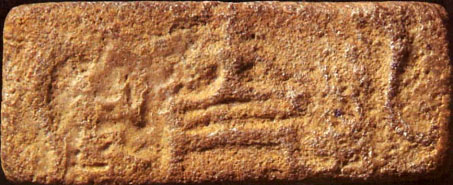

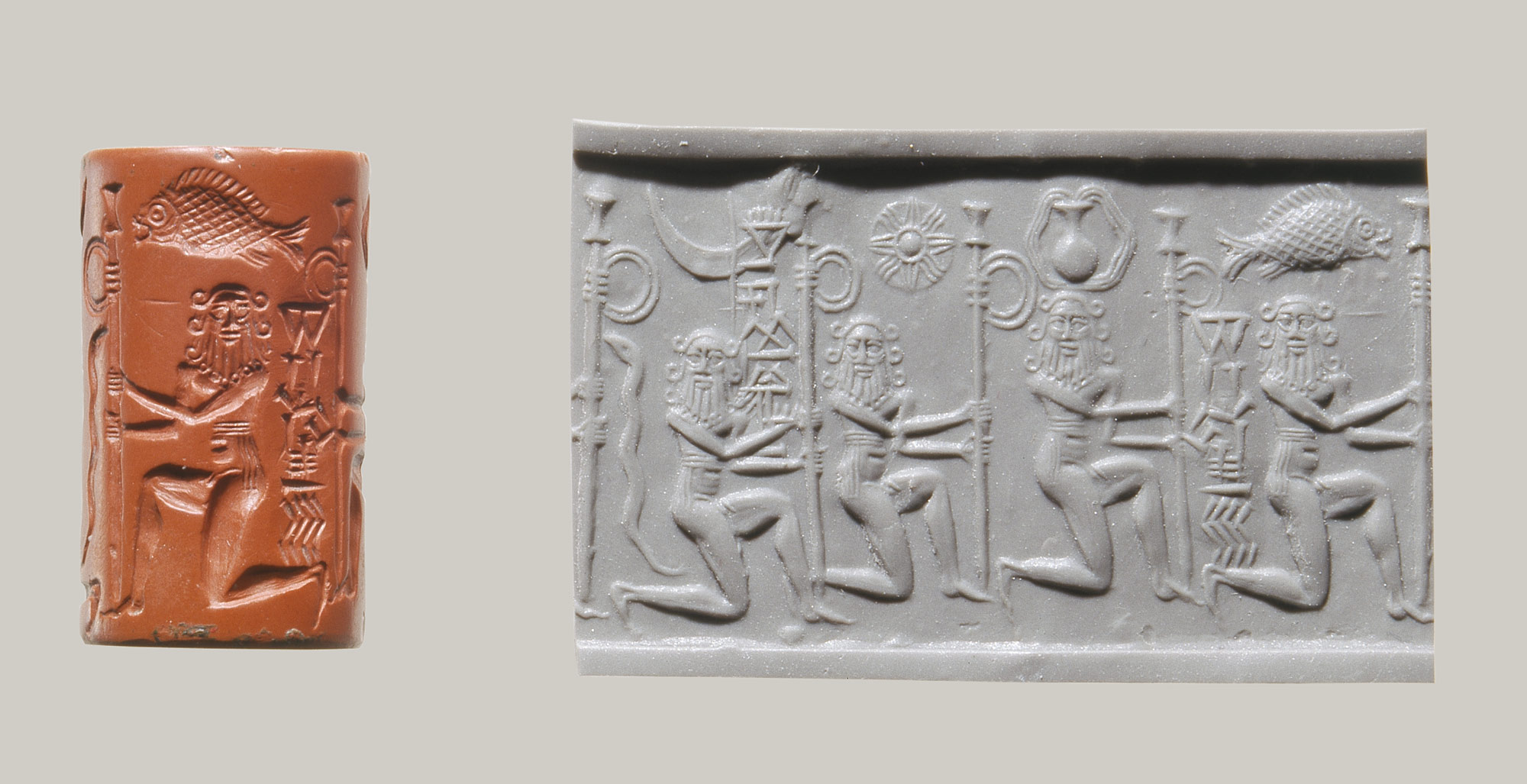

 m0492t
m0492t ![clip_image057[4]](http://kalyan97.files.wordpress.com/2007/06/clip-image0574-thumb.jpg?w=80&h=68) 2835 Pict-99: Person throwing a spear at a bison and placing one foot on the head of the bison; a hooded serpent at left.
2835 Pict-99: Person throwing a spear at a bison and placing one foot on the head of the bison; a hooded serpent at left.


![Image result for bharatkalyan97 cobra hood]() Bharhut sculptural frieze. nagaraja erapattra bharhut Cobra hood and tree. signify metals manufactory and smelter.
Bharhut sculptural frieze. nagaraja erapattra bharhut Cobra hood and tree. signify metals manufactory and smelter. Bharhut sculptural frieze. nagaraja erapattra bharhut Cobra hood and tree. signify metals manufactory and smelter.
Bharhut sculptural frieze. nagaraja erapattra bharhut Cobra hood and tree. signify metals manufactory and smelter.
































 Harappa tablet.
Harappa tablet.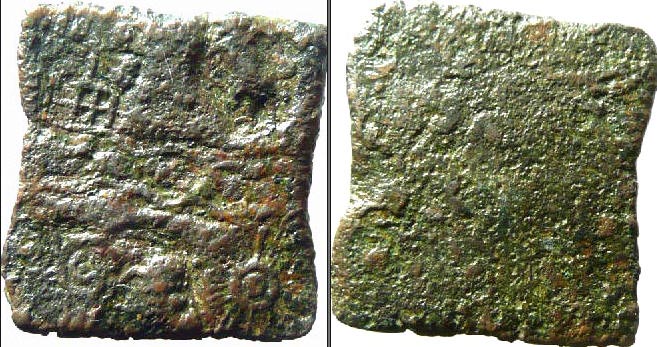
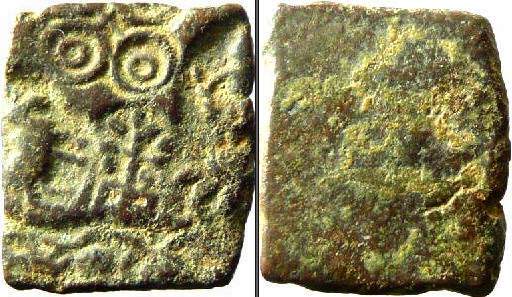

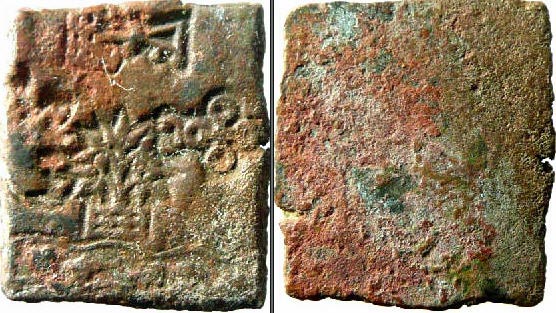
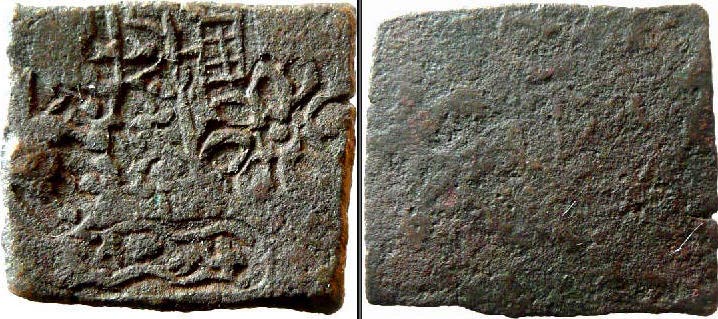
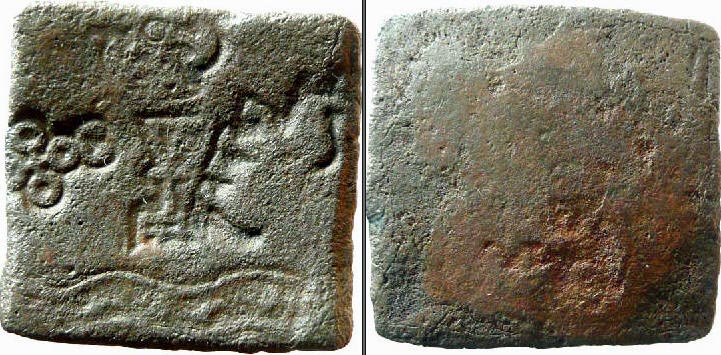
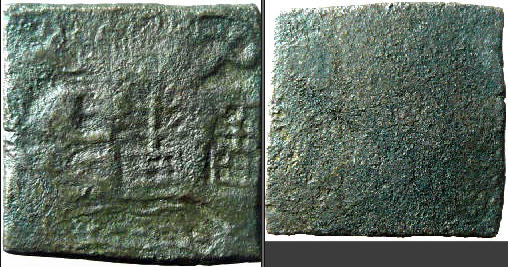


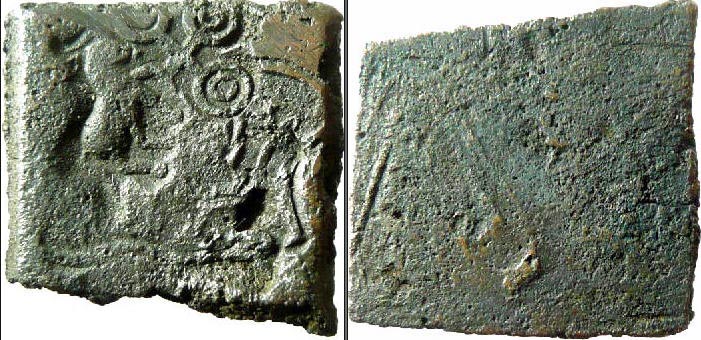
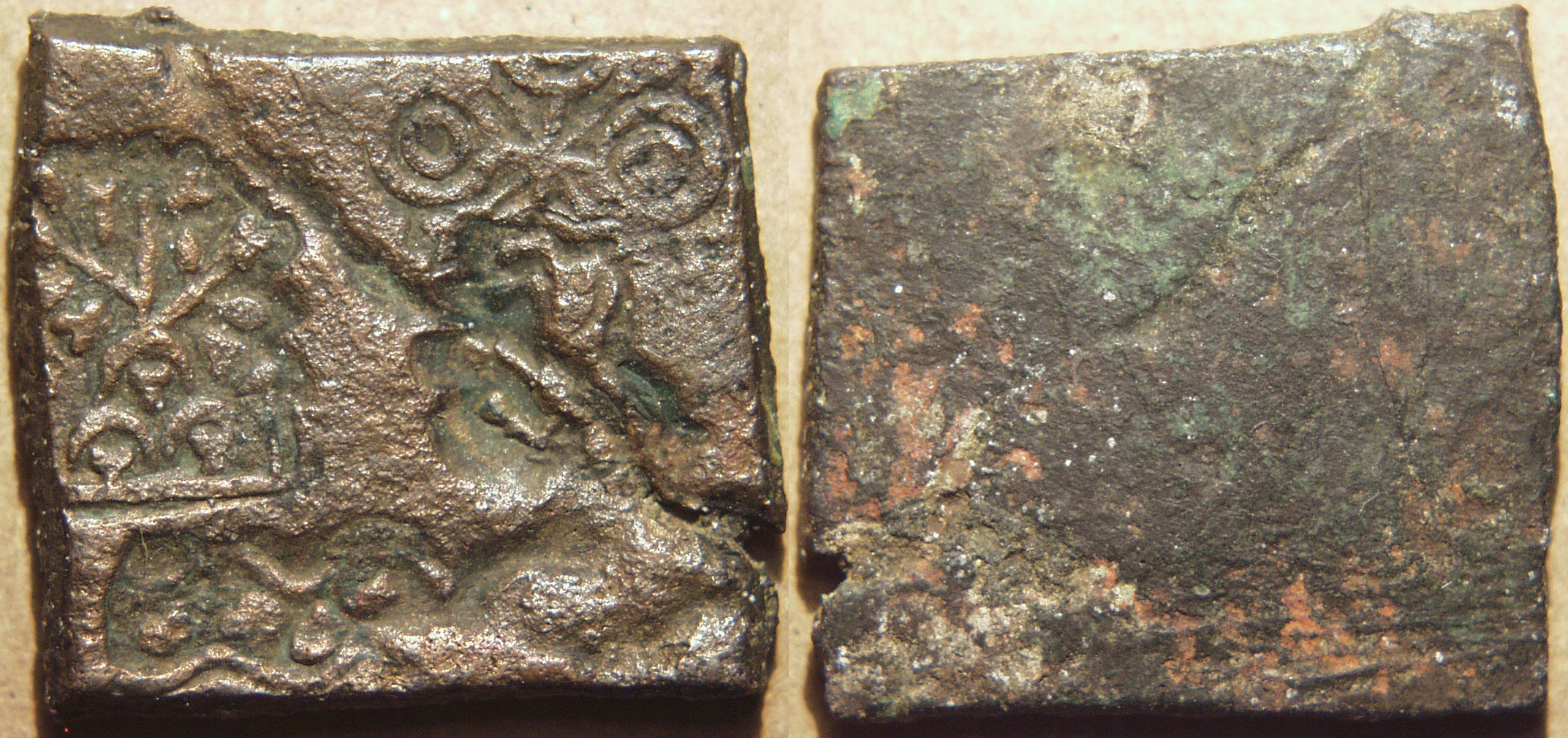
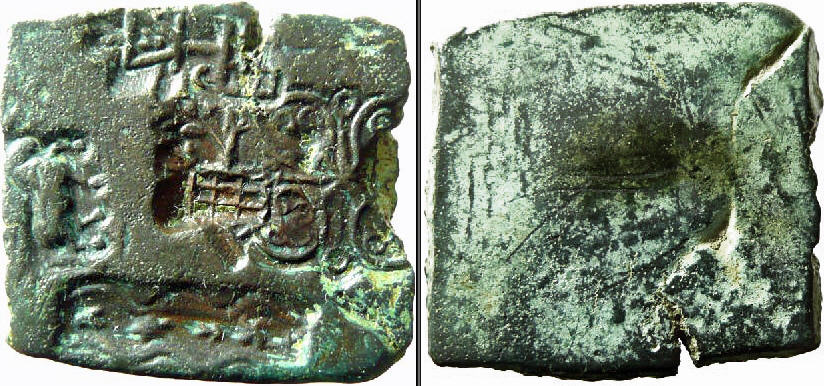
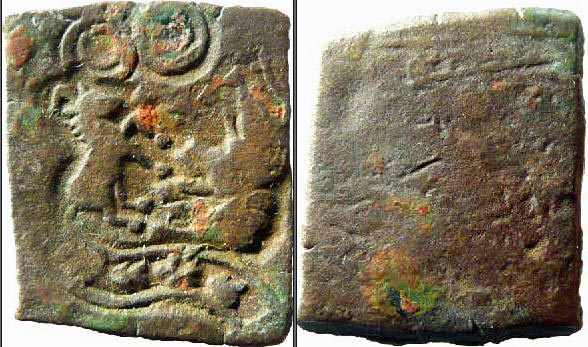


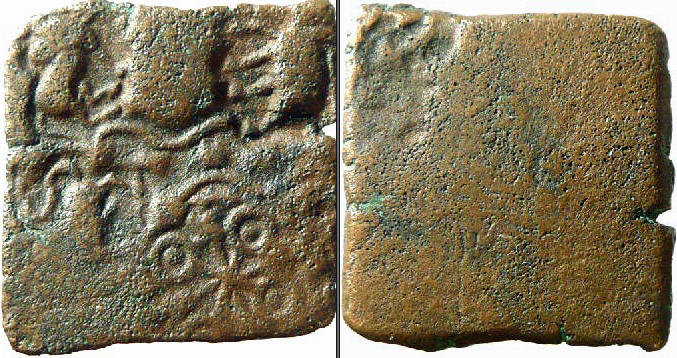
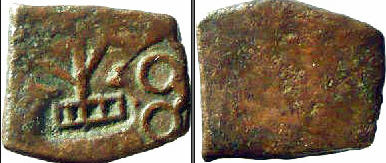
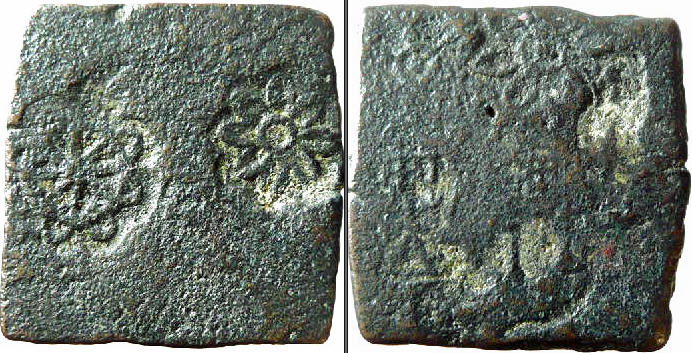

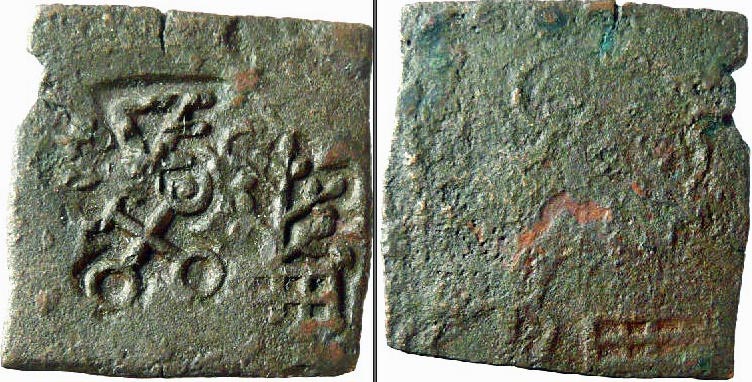

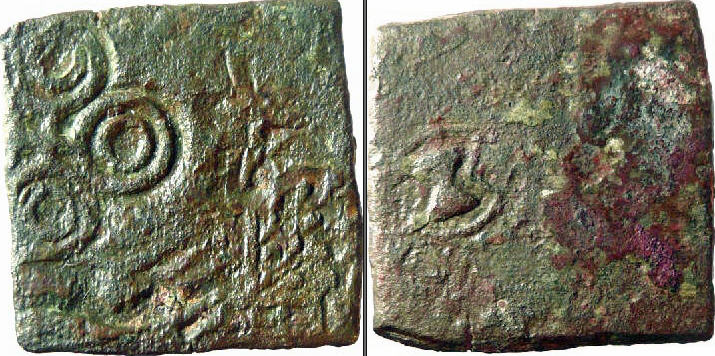
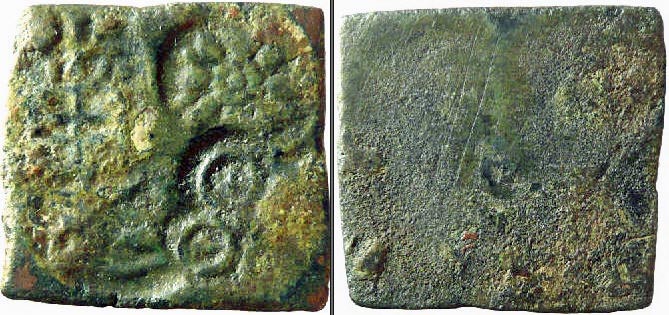

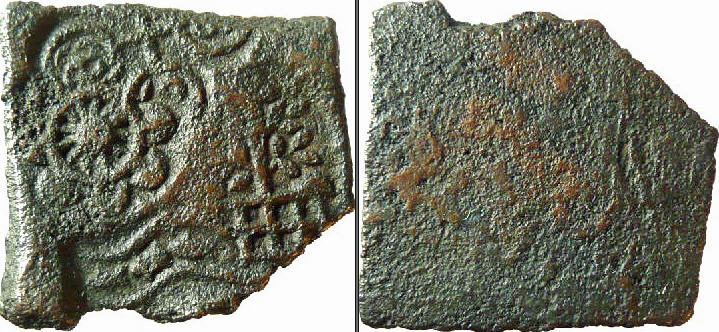

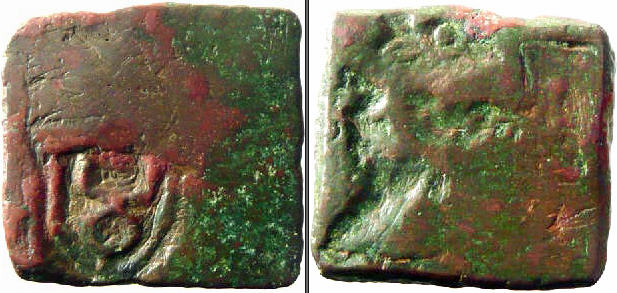
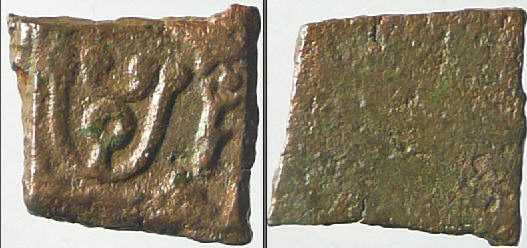

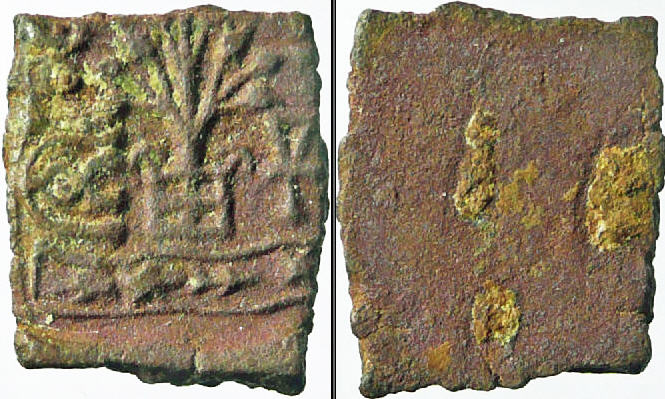

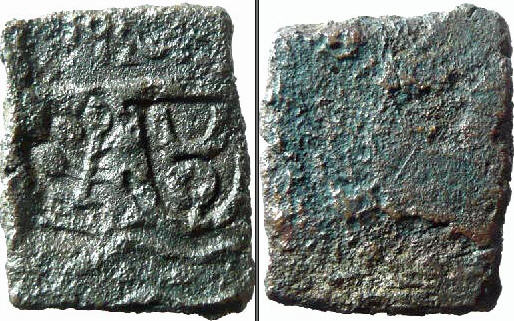
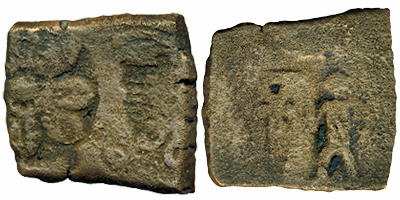
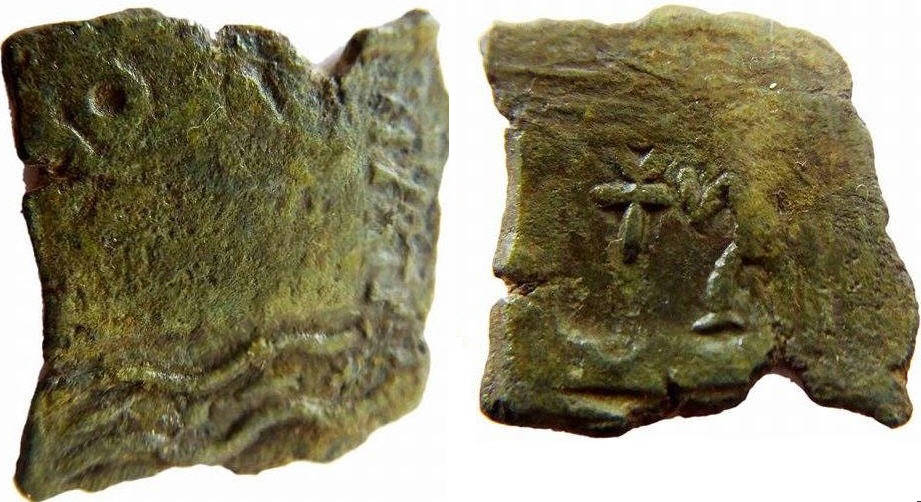 The photo of the illustrated specimen is taken from Bhargava auction 9, coin 33. Such countermarks depicting a standing human with or without Indradhvaja are known overstruck on several worn coin types from the Ujjain region and fom the Eran-Vidisha region as well. The obverse design of this coin is too worn to be sure about the details; there possibly are traces of an 'Ujjain symbol'. Reportedly from Nandner.
The photo of the illustrated specimen is taken from Bhargava auction 9, coin 33. Such countermarks depicting a standing human with or without Indradhvaja are known overstruck on several worn coin types from the Ujjain region and fom the Eran-Vidisha region as well. The obverse design of this coin is too worn to be sure about the details; there possibly are traces of an 'Ujjain symbol'. Reportedly from Nandner.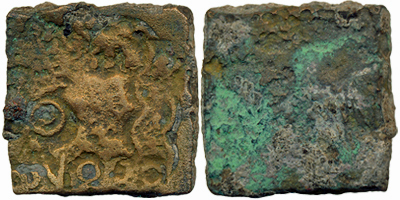


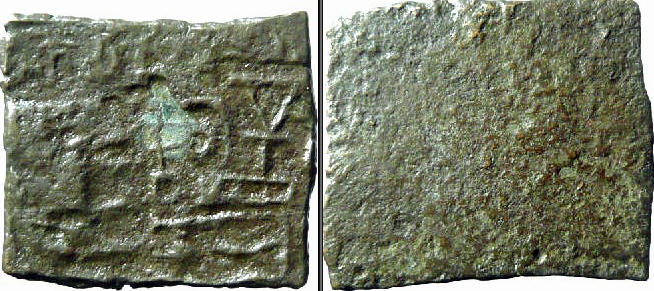

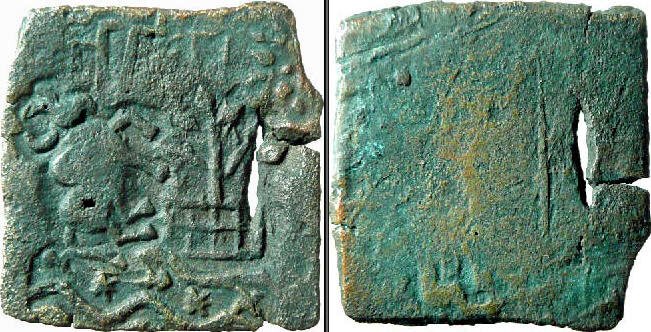
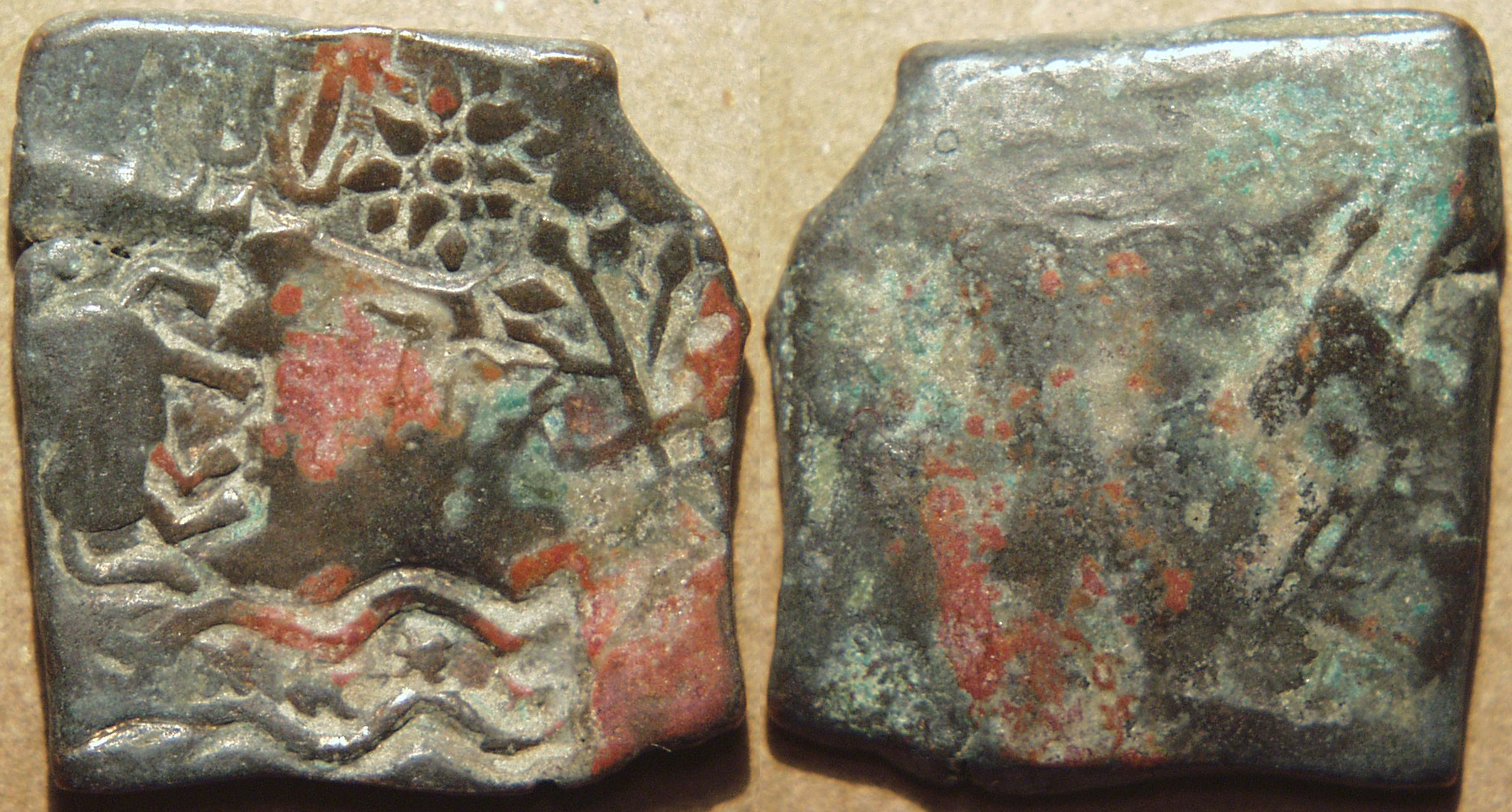
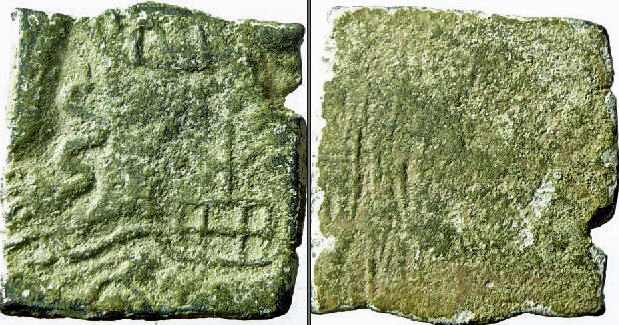

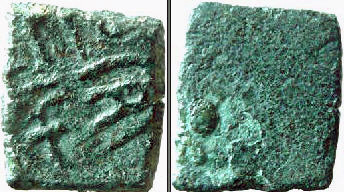



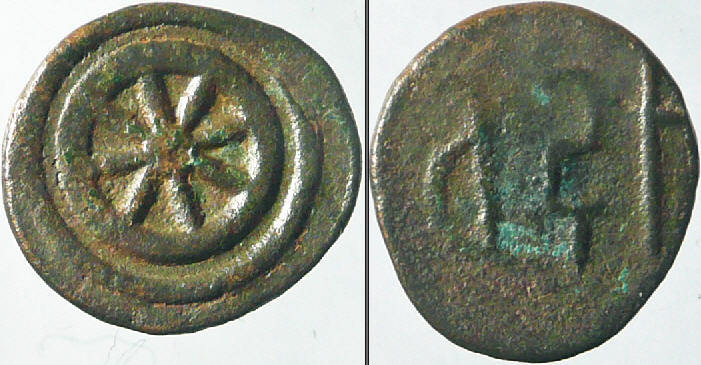
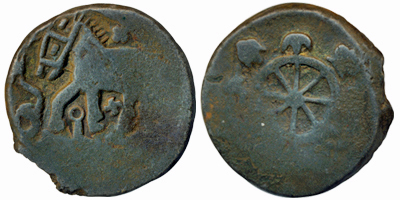
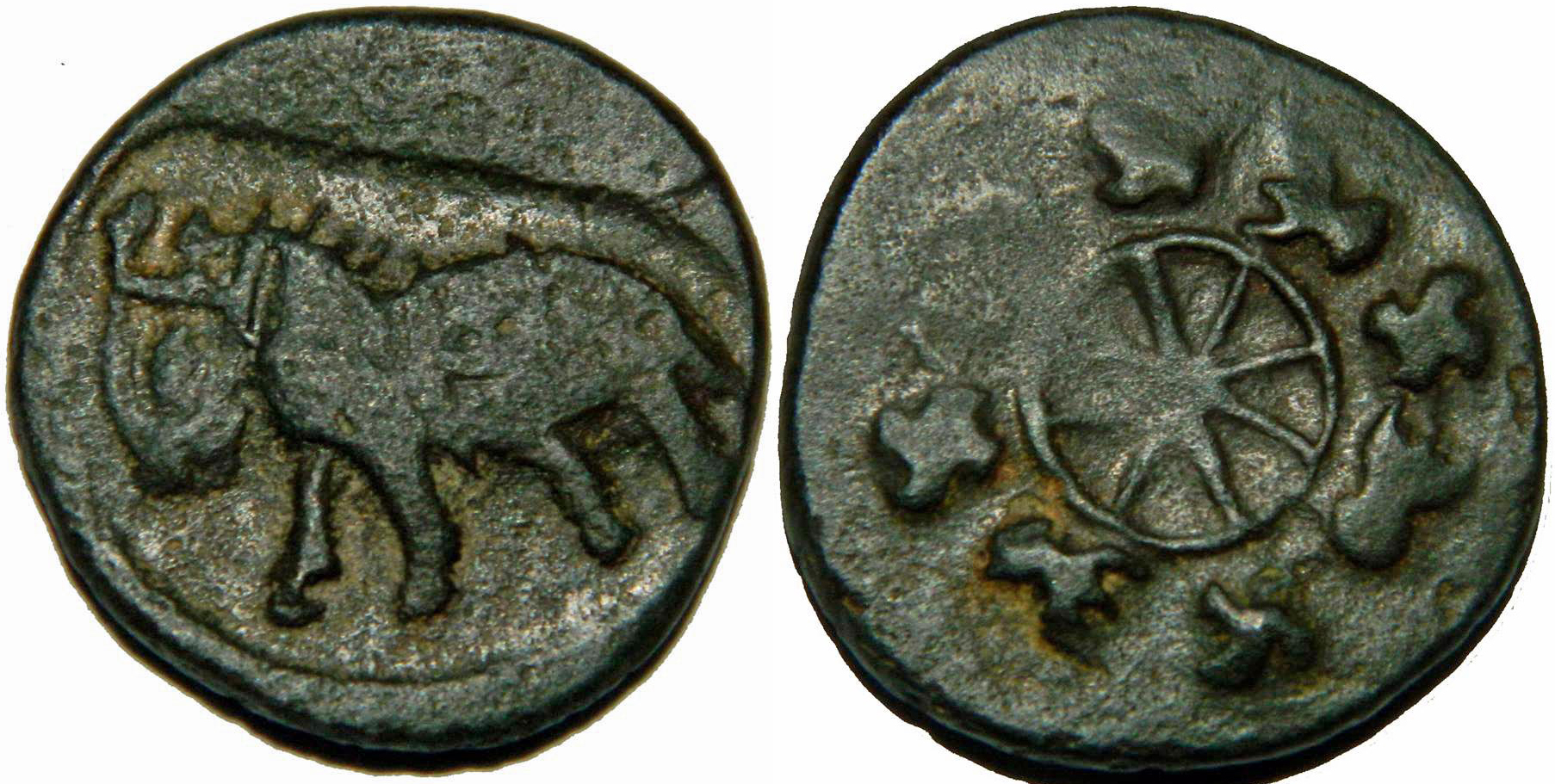
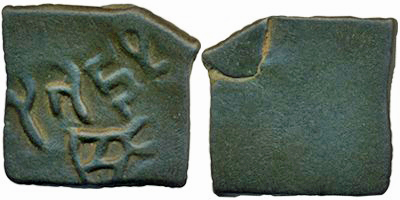
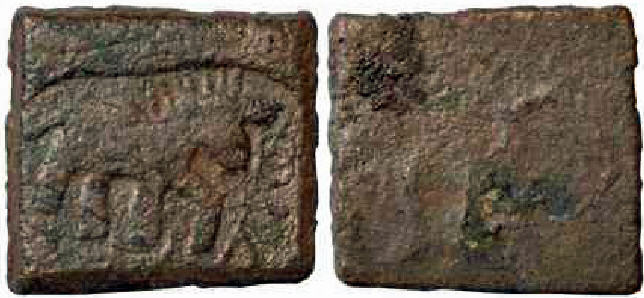


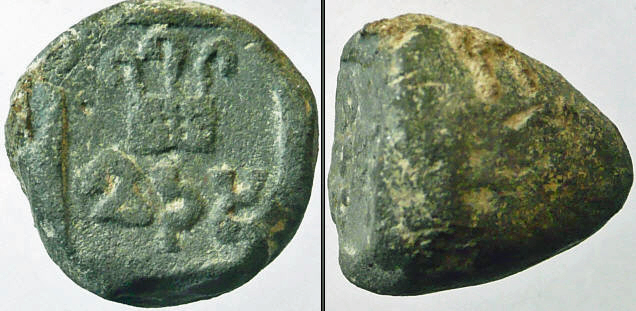





















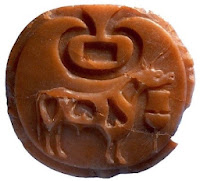
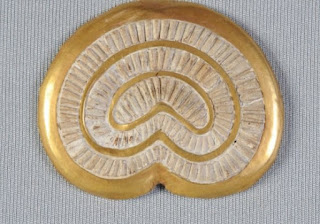
















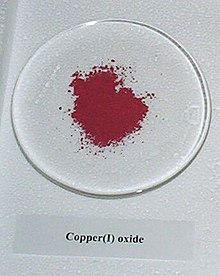



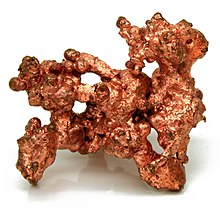 4cm.. Native copper
4cm.. Native copper 




















































































 Santali glosses.
Santali glosses.









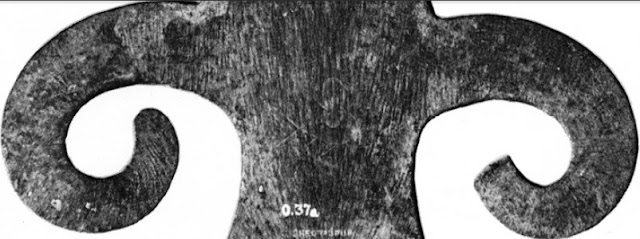






 Elephant-bull composite animal. Maheshwar, Madhya Pradesh.
Elephant-bull composite animal. Maheshwar, Madhya Pradesh.


























































































































































 Early sculpture from
Early sculpture from 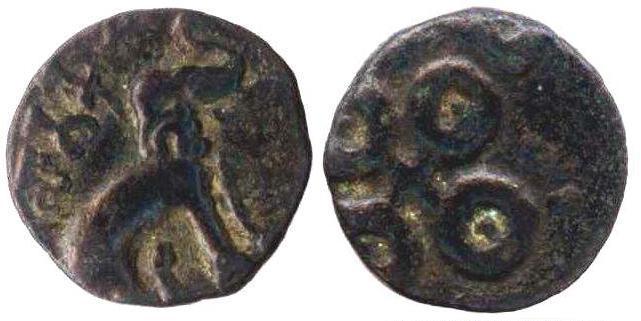 Early coin of
Early coin of 











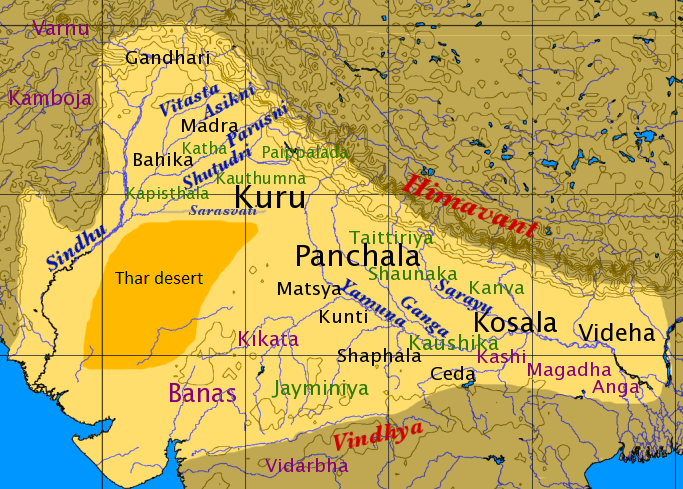


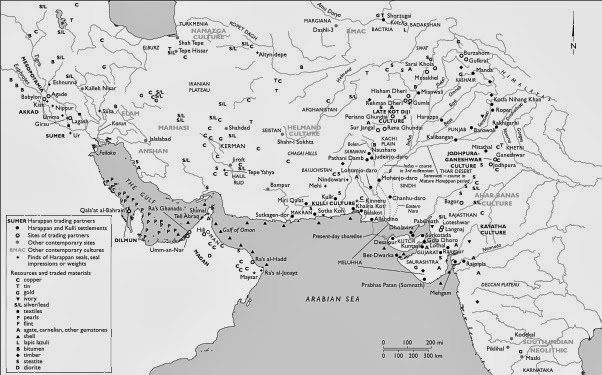
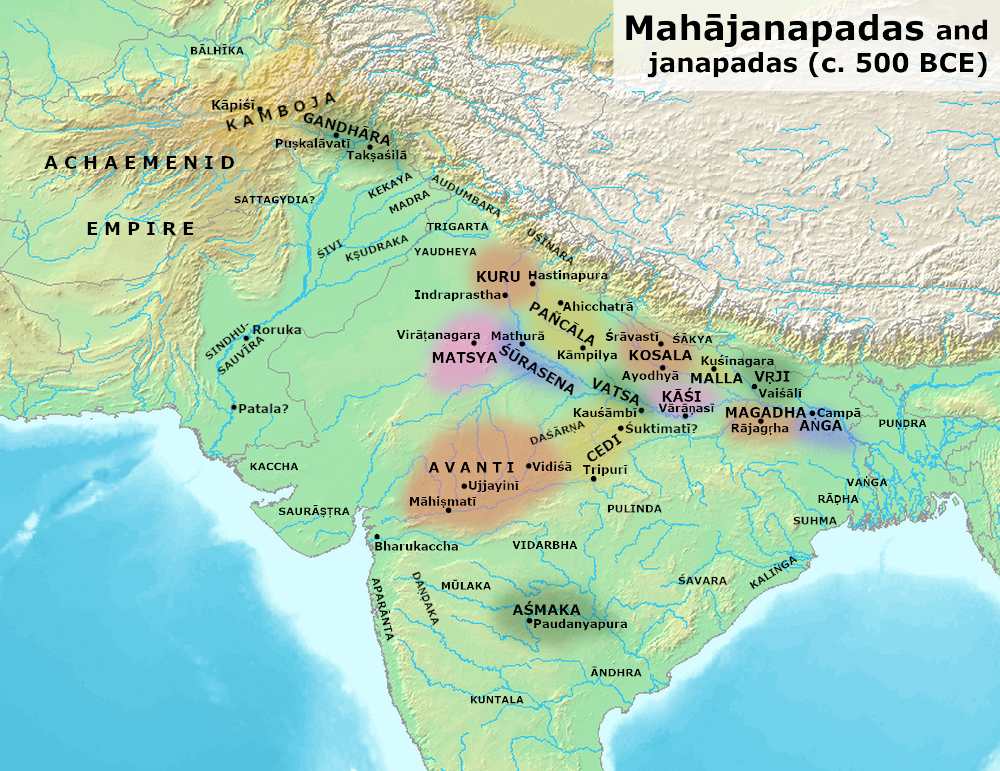































































 Compare with stoneware bangles are torcs as professional calling cards on 1. Kernunnos of Gundestrup cauldron and 2. Kernunnos on Pilier des nautes (Note:Comparable to the 'stoneware bangles' as calling cards are the torcs shown on 1. Kernunnos of Gundestrup cauldron and 2. Pilier des nautes which names K
Compare with stoneware bangles are torcs as professional calling cards on 1. Kernunnos of Gundestrup cauldron and 2. Kernunnos on Pilier des nautes (Note:Comparable to the 'stoneware bangles' as calling cards are the torcs shown on 1. Kernunnos of Gundestrup cauldron and 2. Pilier des nautes which names K



